- View Full Site
- Advertising
- Cookie Policy
- Privacy Statement
- Terms of Service
- Cars, Trucks & Boats
- Auto Maintenance
- General Car Maintenance

How to Install Cruise Control in Your Car
- Written by Bipasha Bhatia on Jun 11, 2010 To ensure our content is always up-to-date with current information, best practices, and professional advice, articles are routinely reviewed by industry experts with years of hands-on experience. Reviewed by KC Morgan on Jul 07, 2023
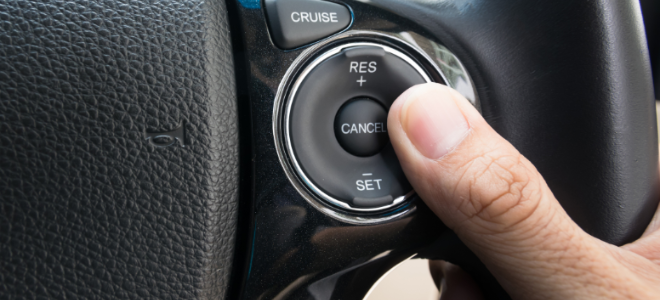
- 5-15 hours •
- Advanced •
You may think that it is difficult to install cruise control into your car. However, it is not that difficult and you can install cruise control in under an hour. There are kits available that will contain everything you need to install an aftermarket cruise control. The vast majority of vehicles will already have cruise control or are ready for the installation of cruise control.
Step 1 - Unhook the Battery
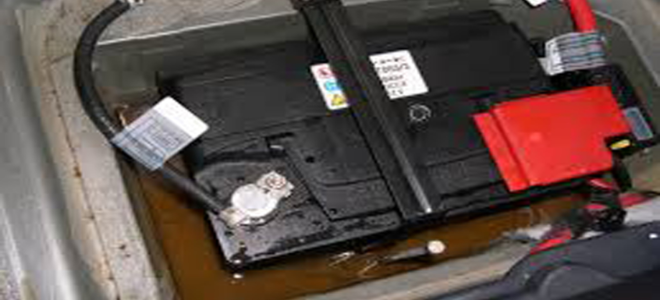
As with anything connected to the power source, it is important to unhook the battery cable. You need to leave the battery unhooked for about 10 minutes so the power is released from the airbag system. You will need to position your key to the accessory power position so you can have the steering wheel unlock. If the power is off then most steering wheels will not turn. Turn the steering wheel enough so that one of the airbag screws is facing the floor.
Step 2 - Move the Airbag
Unscrew the bolts that secure the airbag and lift this away by about 6 inches. You will be restricted by the cables and wires that connect to the airbag. These connections are very important and you need to be careful you do not pull anything out. Unhook the airbag cable connection and be very careful as it contains a small amount of explosives.
Step 3 - Find the Cruise Control Connection
Inside the wheel should be a white connector that is for the cruise control. This is normally close to the horn mechanism. If you are having difficulties finding the cable, then check with your vehicle manual. You may also need to cut through some mounting hardware in order to place the cruise control switch. This will depend on the vehicle. Attach all the wires.
Step 4 - Mount the Switch
It is very important that the switch is mounted securely. You will have brackets and several mounting screws. Once this is mounted you can reattach the airbag and place it back in the steering wheel . Tighten the bolts and if you have a master switch you can install this near the steering column.
Step 5 - Install a Cruise Control Computer
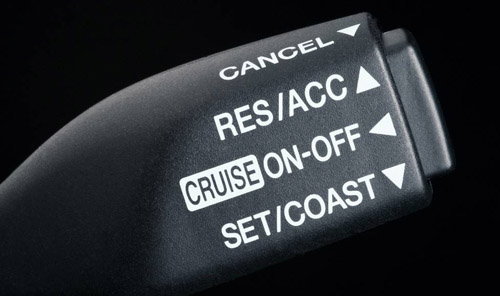
If your car needs a new system or is not cruise control ready, then you will also need to install the cruise control computer. Normally this is near the driver’s side kick panel, though the location can vary depending on the vehicle. Most cars will have studs where the computer smoothly fits over. There is normally a harness specifically for the computer.
Step 6 - Add Other Parts as Needed
You may also need a sub-zero unit and an additional switch. This is normally by the engine bay and is held in place using three bolts. You also may need a cruise actuator and additional cruise switches. It is best to determine which parts you need first to ensure you have everything you need for the cruise control.
Step 7 - Calibrating the Computer
Setting the program for the computer is fairly complicated. Particularly for those that do not understand programming. You may be able to get the manufacturer to calibrate the computer. There are many online guides that can provide you with the details you need to calibrate the computer properly.
Install Cruise Control FAQ
What's the point of cruise control.
Cruise control allows you to set the speed of your car to a certain MPH so you can take your foot off the pedal. This makes it much more comfortable to drive for an extended amount of time over long distances.
In addition to making it easier to drive for a long time, cruise control is more fuel-efficient. Whether you're trying to or not, you will make minor changes to your speed as you drive along with your foot on the pedal because as a human, your foot will perform small movements that cause speeds to fluctuate.
Can you install cruise control yourself?
You can not only install cruise control on your own, this is a relatively easy DIY project to complete. There are cruise control kits available that make it fairly simple to add cruise control to your vehicle.
Can you install cruise control after market?
There are hundreds of after market cruise control kits available for many car makes and models. You can install most of these kits within a couple of hours using standard hand tools.
Do I really need cruise control?
If you do a lot of driving over long distances, cruise control can save you a lot on fuel costs and foot pain. The savings in fuel costs alone makes it worthwhile to have cruise control, but it is only useful if you do a lot of long distance driving.
What are disadvantages of cruise control in a car?
Cruise control has a lot of benefits and there are a lot of things to like about having this feature. However, cruise control does have a downside.
Crise control can slow down your reaction time and make it more difficult to slow down quickly, something you might need to do for safety's sake if something happens on the road ahead of you. It is more difficult to drive in foul weather with cruise control, increasing your risk of accidents in icy or wet conditions.
It is also easier to get distracted or sleepy while driving with cruise control, because you may stop being quite as alert when your foot and hands are not fully engaged in driving at all times.
- Vehicle Repairs
Related Posts
Popular articles.

- our experts
- terms of use
- privacy policy
- cookie policy
DoItYourself.com®, founded in 1995, is the leading independent home improvement and repair website. We welcome your comments and suggestions. All information is provided "AS IS." Website operating problems contact [email protected] . Questions of a Do It Yourself nature should be submitted to our " DoItYourself.com Community Forums ". Copyright© 1995-2024 MH Sub I, LLC dba Internet Brands. All rights reserved. You may freely link to this site, and use it for non-commercial use subject to our terms of use . View our Privacy Policy here .
Can You Add Cruise Control to a Car?
By: Author Zach Reed
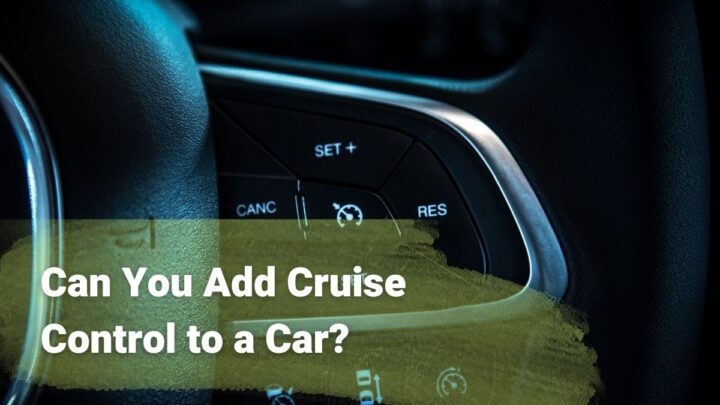
If you’ve ever driven a car with cruise control, you’re aware of how nice it is, especially on long drives or road trips.
Just being able to set the speed you want and letting your car maintain itself allows you to not have to worry about keeping your foot on the gas. But if your car doesn’t have cruise control, can you add it yourself?
You can add an aftermarket cruise control system for many different types of cars. Some cars already have the necessary sensors and electronics, while others will have to have it installed from scratch.
Adding cruise control to a car can be a great way to make your driving experience more enjoyable.
In this article, we will discuss whether or not you can add cruise control to your car and how difficult it is to do so.
We’ll also talk about the benefits of adding cruise control to your car and whether or not it’s worth the cost!
By extensively researching and vetting all the topics that we talk about on this site, you can read these articles with the confidence that you’re only getting the most helpful content possible.
By combining our own knowledge and experience with input from other automotive experts in the industry, you get the complete answer on whether or not you can add cruise control to a car.
What is Cruise Control?
Before we get too far into the nitty-gritty details of possibly adding cruise control to your car, let’s quickly go over what cruise control is and how it works.
After all, if you’re planning on tackling this project on your own, then it’s important that you really understand what the system is and what it does.
Otherwise, you could be trying to work on something that you really don’t understand, which almost never ends well.
So, what is cruise control?
In the most basic sense, it’s a system that allows you to maintain a set speed without having to constantly press down on the accelerator.
It does this by using sensors to detect the speed of your car and then adjusting the throttle accordingly.
Most cruise control systems can be set to any speed between around 20 and 90 miles per hour, although some newer systems can go even higher than that.
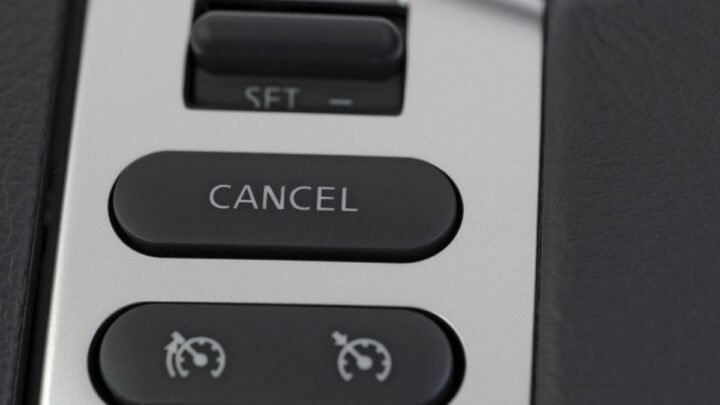
How Does Cruise Control Work?
Now that we know what cruise control is, let’s take a look at how it actually works . As we mentioned before, the system uses sensors to detect the speed of your car and then adjusts the throttle accordingly.
The sensors are usually located on the front wheels of the car and work by detecting how fast they are rotating.
Once the sensors have detected the speed of the car, the information is sent to a computer located in the vehicle.
This computer then adjusts the throttle so that your car will maintain the desired speed.
In some vehicles, you can even feel it in the accelerator, as it will physically be locked into place to maintain that speed and then be adjusted accordingly.
To disengage the cruise control, you can either hit the brakes or push a button on the steering wheel (or wherever the cruise control system is activated from).
Some cars also have a feature where if you go below a certain speed, it will automatically turn off.
Do All Cars Come With Cruise Control?
Now that we know what cruise control is and how it works, you might be wondering if all cars come with it . The answer is no, not all cars come with cruise control. In fact, many older vehicles don’t have it.
Even some newer vehicles don’t have cruise control, although this is becoming increasingly rare. With how much of a convenience this feature is, manufacturers are including it as a standard option.
If you’re not sure whether or not your car has cruise control, the best way to find out is to consult your owner’s manual. It should have all of the information on what features your car has.
If you don’t have the manual, you can also try looking online or contacting the dealership where you bought the car.
Also, you can look around for the buttons. Typically located on the steering wheel or somewhere nearby, it will usually say “CRUISE”, “SET”, “ACC”, and “RES.”
Find those, and you’ve found the cruise control!
Can You Add Cruise Control to Any Car?
Now that we know what cruise control is and how it works, as well as whether or not all cars come with it, you might be wondering if you can add cruise control to your car. Unfortunately, the answer is not always a simple one.
It really depends on your car and what kind of system it has. For example, if your car already has the necessary sensors (usually on the front wheels), then it’s possible that you could add cruise control to it.
However, if your car doesn’t have those sensors, then you would need to have them installed, which can be difficult and expensive.
Additionally, even if your car does have the necessary sensors, there’s a good chance that the computer system isn’t set up to use them. In that case, you would also need to have that system reprogrammed, which can also be difficult and expensive.
And even if you do manage to get cruise control installed in your car, it might not work as well as the factory-installed system.
How Hard Is It to Install Aftermarket Cruise Control?
Adding an aftermarket cruise control system to your car can be quite difficult. Even if your car has the necessary sensors and computer system, you’ll need to have them professionally installed, or you can do it yourself if you have the necessary knowledge and tools.
While I’m always all for performing your own work on your car, it’s important to truly understand what’s involved and what you need to do before you start messing with some systems like this.
This can be expensive, and it’s not always guaranteed to work properly. Additionally, aftermarket cruise control systems often don’t work as well as factory-installed systems.
So, it’s important to weigh the pros and cons before deciding whether or not to add cruise control to your car.
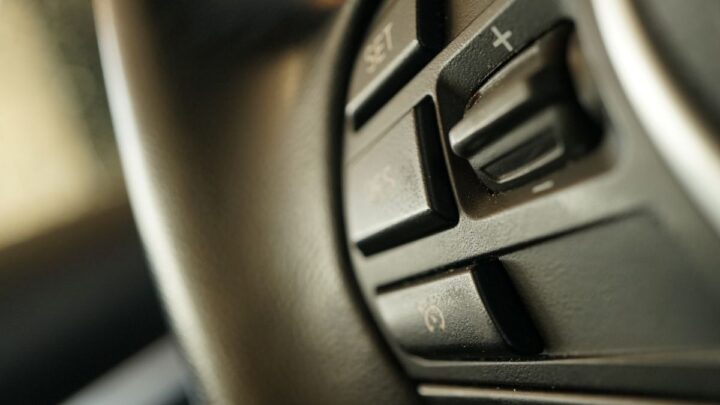
How Much Does it Cost to Add Cruise Control to a Car?
The biggest factor in deciding to add cruise control to your car is likely going to be the cost. While the cost of the actual cruise control system itself isn’t too bad, it’s the installation that can really break the bank.
If you’re not comfortable doing it yourself, then you’ll need to pay to have someone else do it for you.
And as I mentioned before, if your car doesn’t already have the necessary sensors and computer system, then you’ll need to pay to have those installed as well.
So, the cost of adding cruise control to your car can range from a few hundred dollars to a few thousand dollars. It really depends on your car and what needs to be done.
If a basic aftermarket cruise control system will work with your car and you can do it yourself, then you’ll be on the lower end of the spectrum.
But if your car needs a lot more for the system to work right and you have to pay a mechanic or a shop to do the installation, it will cost significantly more.
Summing Up Adding Cruise Control to Your Car
Adding cruise control to your car can be expensive and difficult, but it can also be a great convenience. It’s important to decide for yourself whether or not it’s worth it to add cruise control to your car.
Consider how much it would cost and how difficult it would be to install the system in your car.
Also, think about how often you would use cruise control and whether or not you feel comfortable using it.
If you decide that adding cruise control is right for you, then go for it! You’ll be glad you did when you’re cruising down the highway with your hands-free. But if you decide that it’s not worth the cost or effort, then that’s okay too.
There are plenty of other ways to make driving more convenient and enjoyable. Thanks for reading!
Hi, I'm the founder of VehicleAnswers.com! Having owned a wide variety of vehicles in my life, I was astounded at how hard it can be to find answers to common automotive questions. Rather than sit idly, I decided to create this website to help others!

Can You Add Aftermarket Cruise Control? [And How To]
- July 20, 2023
- Electronics
Cruise control is a feature in many cars. It allows drivers to control the speed of their vehicles without significantly relying on manual controls. But is it possible to install aftermarket cruise control? If so, how can you complete the installation procedure? We researched the answers to these questions, and here's what we found.
Most cars allow installations for aftermarket cruise control systems. Vehicle owners should first check if their chosen cruise control kits are compatible with their vehicles. Universal kits are available on the market to help reduce the inconvenience and risks associated with buying the wrong model.
Here's a quick look at the steps to install an aftermarket cruise control in a car:
- Program the actuator and install it in a safe location in the vehicle.
- Measure the throttle travel and mark the distance from the starting and finishing points.
- Set the pulley segment to its open throttle position.
- Slide the barrel cable through the appropriate hole and connect it to the rest of the cable assembly.
- Remove the sleeve from the cable assembly with a wrench and nut.
- Screw the snap-in adapter and attach it to the extension bracket.
- Straighten the wiring harness by separating the 4-pin mating connectors.
- Pass the 4-pin connector and the violet wire through the correct hole.
- Reconnect the 4-pin connector and attach the other wires.
- Use the sealing putty to cover the bulkhead hole.
- Install the lever assembly in the driver panel.
- Run diagnostics to check if the newly installed cruise control works.
One mistake can lead to disastrous results despite installing an aftermarket cruise control being a relatively DIY-friendly job. Continue reading to learn more about cruise control systems. We'll also talk about the installation steps in greater detail as you keep reading this post.
![adding cruise control to your car Driver setting the cruise control setting, Can You Add Aftermarket Cruise Control? [And How To]](https://vehq.com/wp-content/uploads/2022/03/Can-You-Add-Aftermarket-Cruise-Control-And-How-To-1.png)
What Is Cruise Control And How Does It Work?
Generally, cruise control functions by controlling a car's speed. For example, hitting the cruise control button once can cause a vehicle to accelerate or decelerate by one mph. So pressing the same button three times makes the car go faster or slower by three mph.
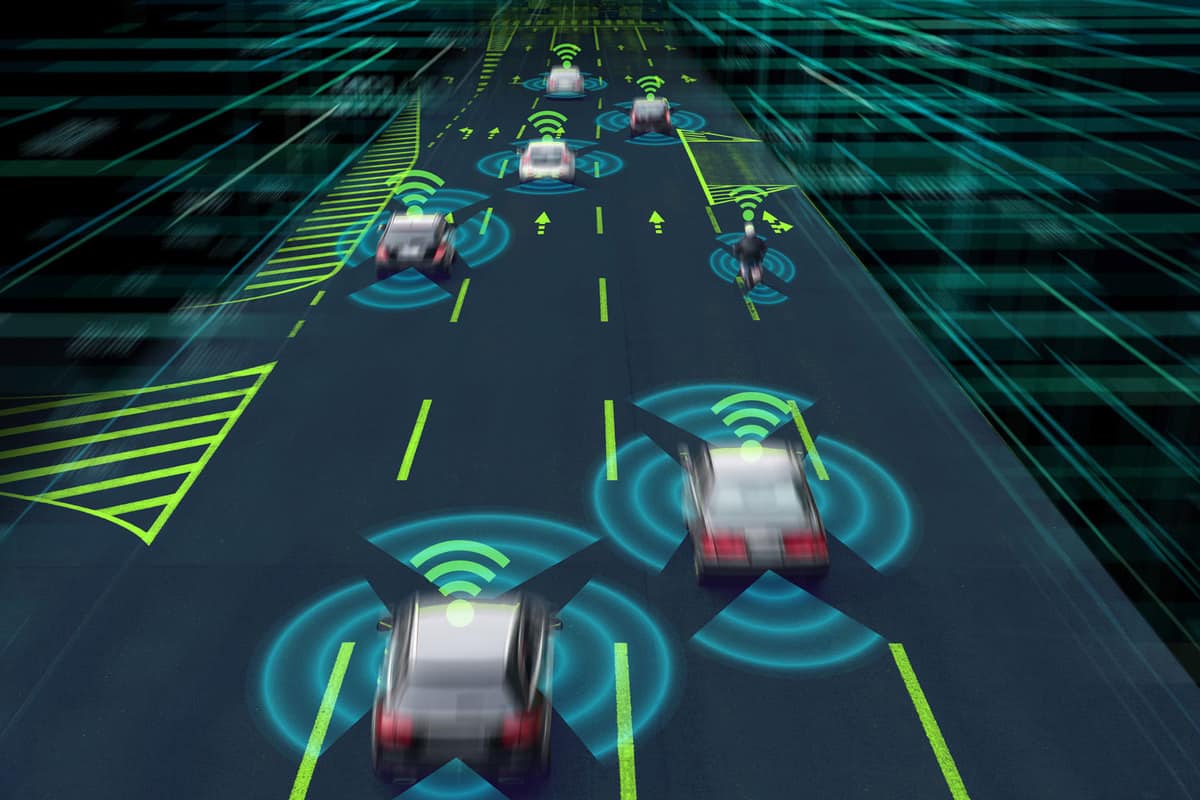
Various manufacturers also add extra features with their cars' cruise control features. Some of these add-ons may include [but aren't limited to]:
- Automatic disengage: The cruise control will stop working upon hitting the brake pedal.
- Adaptive cruise control: Uses laser or radar sensors to detect objects at the front and switch the vehicle's speed according to real-time driving conditions.
- Set/Accel: Maintains the car's current speed.
Can Cruise Control Be Installed Aftermarket?
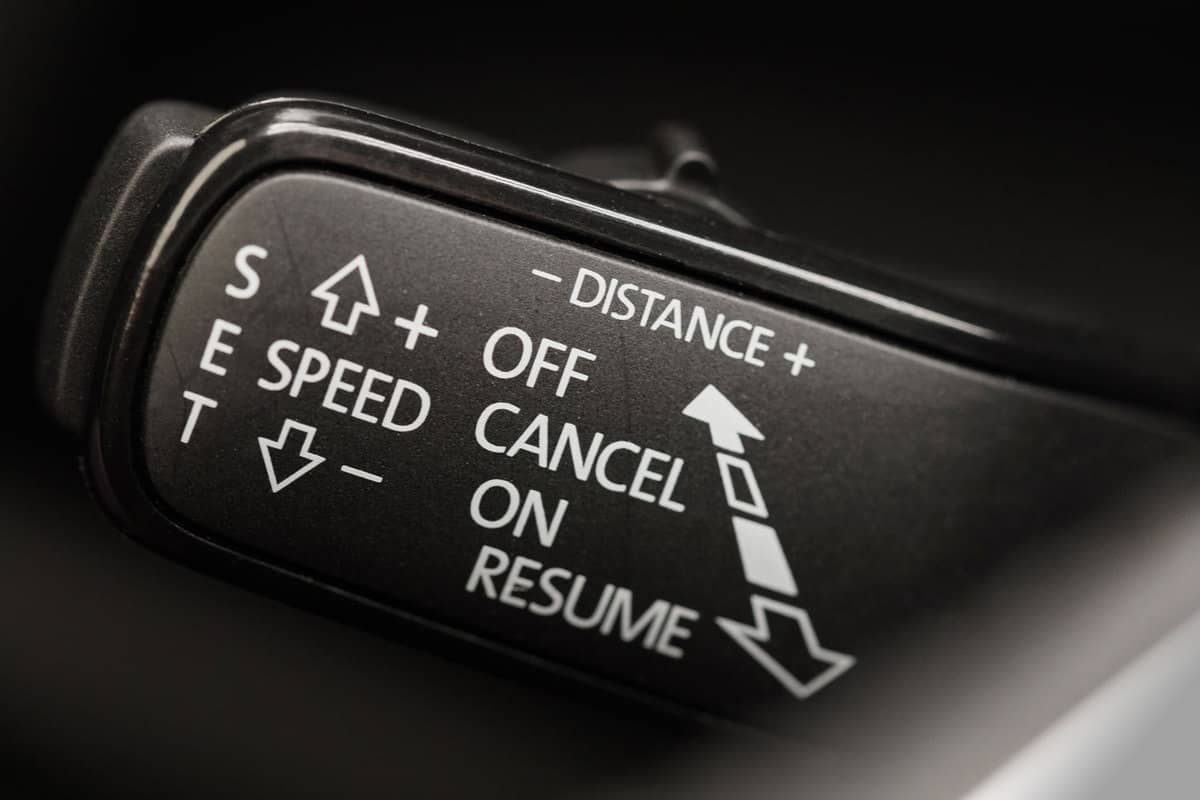
It's possible to install aftermarket cruise control on relatively any car. The vehicle will typically only need a control switch to activate the features built into the cruise control module.
But keep in mind that different cruise control providers often add different characteristics and features to their products. The price ranges may also vary for each supplier.
Also, be aware that installing aftermarket products, including cruise control systems, may void the car manufacturer's warranty. Ensure that you fully understand the risks involved in installing third-party cruise control systems before proceeding with the assembly.
How To Install Cruise Control Kit For Car?
Before proceeding with this project, make sure that the cruise control kit is compatible with your vehicle. Also, read this system's owner's guide; the instruction manual may show you unique steps that might not be present in some cruise control kits offered by other brands.
You may also need to purchase other equipment required for this project. So expect to spend more money to buy these materials and tools to complete the cruise control setup properly. One of the needed items is a signal generator, which your car may or may not possess. Consult the carmaker to verify the existence of this component if you're unsure.
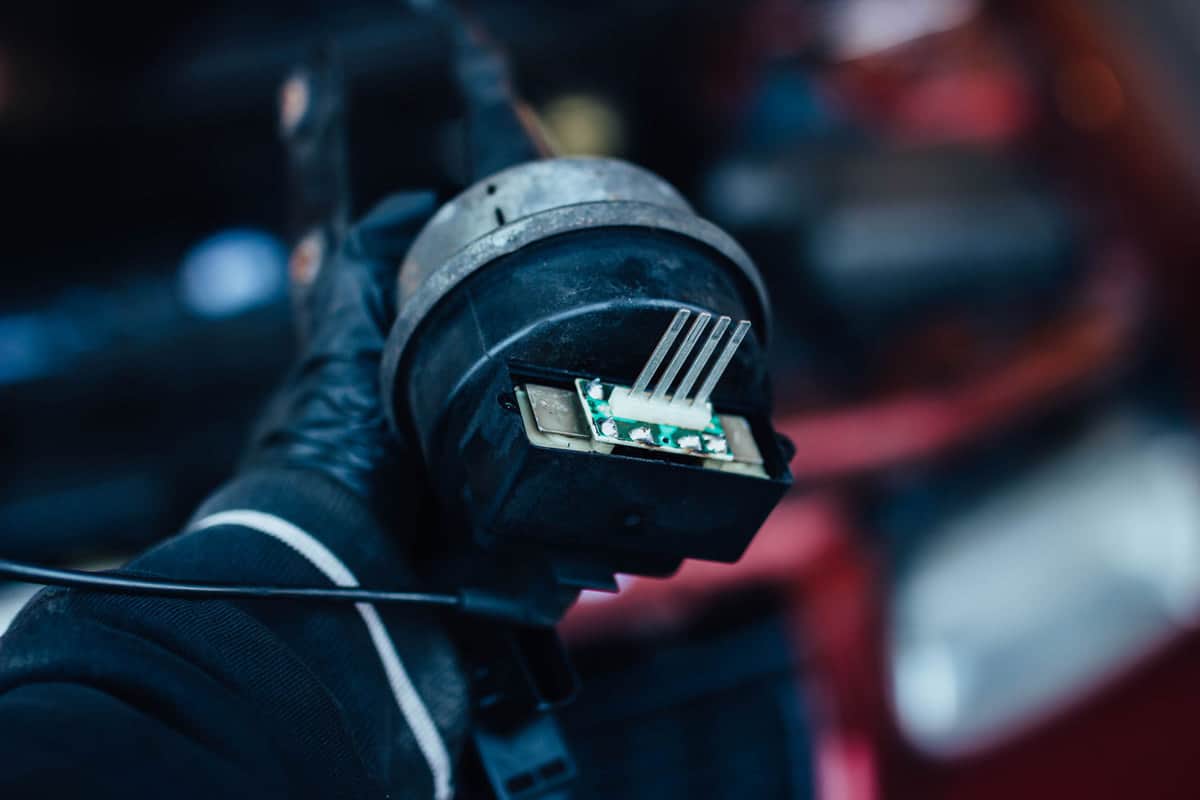
Finally, take the time and don't hurry with the installation. An improperly installed cruise control system may result in a system malfunction. It can then damage the vehicle and pose a high risk of injury to its driver and passengers. The engine should also be off while setting up the kit to prevent accidents while completing the task.
After finishing the preparations and preventive measures, here are the steps to help you install a cruise control kit on your car:
What You'll Need
- Cruise control kit
- Actuator assembly with harness
- Mounting kit
- Extension bracket
- Snap-in adapter
- Screwdriver [optional]
Step-by-Step Guide
- Program the actuator assembly according to the cruise control's installation manual. You should see a chart that tells the actuator switches should be at the on or off positions.
- Place the programmed actuator assembly into your preferred safe location in your vehicle. Ensure that the harness reaches the actuator from that place.
- Measure the throttle travel from its idle to the wide-open position. Mark the starting and finishing points with a marker to serve as a guide.
- Set the pulley segment to the open throttle position.
- Slide the end of the barrel cable through the hole.
- Connect the loop cable to the cable assembly. Use the bead chain connector if necessary.
- Use an appropriately sized wrench with an accompanying nut. Turn the wrench and nut counter-clockwise to remove the sleeve from the cable assembly.
- Screw the snap-in adapter to the cable assembly. Ensure that the assembly extends further than the adapter.
- Attach the snap-in adapter to the square hole of the extension bracket.
- Straighten the harness assembly by separating the 4-pin mating connectors. You may need a screwdriver for this step.
- Pass the 4-pin connector and the accompanying violet wire through the appropriate hole.
- Reattach the 4-pin mating connector and attach the other wires.
- Seal the bulkhead hole with sealing putty, which should also be in the cruise control kit.
- Connect the other wires with their color-coded adapters.
- Install the lever assembly in your vehicle's driver panel as instructed by the kit's manual.
- Run diagnostics to check if the aftermarket cruise control system works as intended.

Check out this cruise control kit on Amazon.
You can also watch the video below to learn more details about this task:
What Cars Have Adaptive Cruise Control?
Adaptive cruise control [ACC] is a system that often uses sensory technology to apply the brakes and deliver warning signals to the driver if needed. Some vehicles that have this feature are:
- 2018 Honda Accord
- 2018 Toyota Rav4
- 2019 Kia Soul
- 2020 Toyota Corolla Hatchback
- 2020 Volvo S60
You might also be wondering if the Volvo V60 has adaptive cruise control. If so, you can read our post on that topic to satisfy your curiosity.
What Is The Disadvantage Of Cruise Control?
Cruise control is usually a benefit for many drivers. But users should pay attention to the correct scenarios to use this system. Some instances may demand drivers to rely more on their inherent skill than depending on the vehicle's automatic features to guide them while on the road.
So you should not use cruise control when:
The Road Is Slippery

Snow and heavy rain can reduce the efficiency of cruise control systems. Take note that cruise controls often handle the acceleration and deceleration of a vehicle. That means that many of these apparatuses generally don't consider the wheels' traction on different terrain.
Traffic Is Heavy
It can be challenging to gauge the recommended speed to use in heavy or slow-moving traffic. If you find yourself in that situation, it's best to switch to manual controls rather than relying on the cruise control system to reduce the risks of on-road accidents.
Encounter Twisting Roads

Sharp turns can become more dangerous than usual if you put too much faith in your car's cruise control feature. It's in these driving conditions that you should manually regulate your speed.
You're Sleepy
It's always best not to take the wheel if you're feeling drowsy. However, if you need to drive and feel sleepy, relying on cruise control may make you feel more comfortable. If so, you might put yourself at a high risk of sleeping behind the wheel.
You can also read our post on when to use cruise control to learn more about the hazards of using this technology.
Final Words
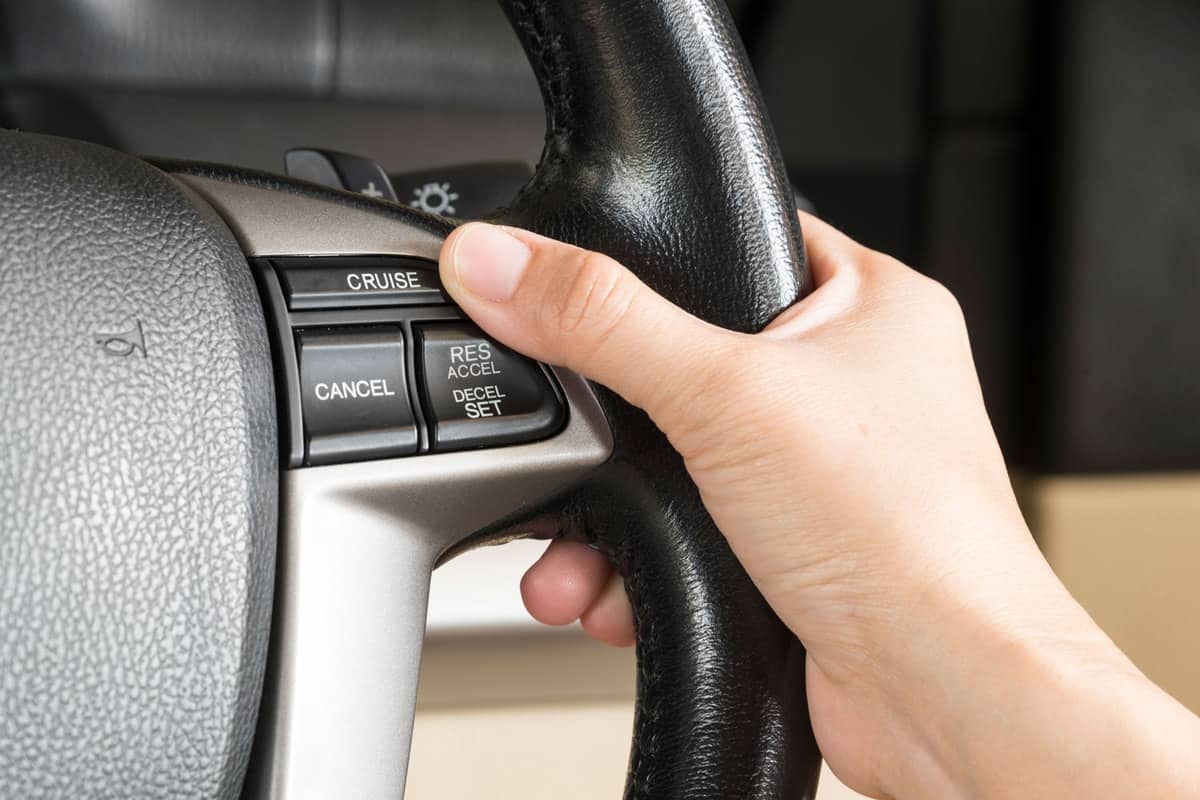
You can install aftermarket cruise controls in many vehicles that don't have these technologies. Make sure to follow the correct installation procedure to set up this system properly. Failure to complete a proper installation can result in vehicle damage and a high driver and passenger injury risk.
Related posts:
- How To Remote Start Jeep Cherokee [Including Aftermarket]
- Does Volvo V60 Have Adaptive Cruise Control
- Does The Jaguar XF Have Adaptive Cruise Control?
- Does GMC Yukon Have Adaptive Cruise Control?
Leave a Reply Cancel Reply
Your email address will not be published. Required fields are marked *
Name *
Email *
Add Comment *
Post Comment

- Concept Cars
- Movies & Television
- Air Conditioning & Heat
- Brakes & Brake Parts
- Engines & Components
- Lighting & Lamps
- Suspension & Steering
- Wheels & Tires
- Sports Cars
- Motorsports
- Motorcycles
- ATVs & UTVs
- Shop Motors
Adding Aftermarket Cruise Control Is Easier Than You Think
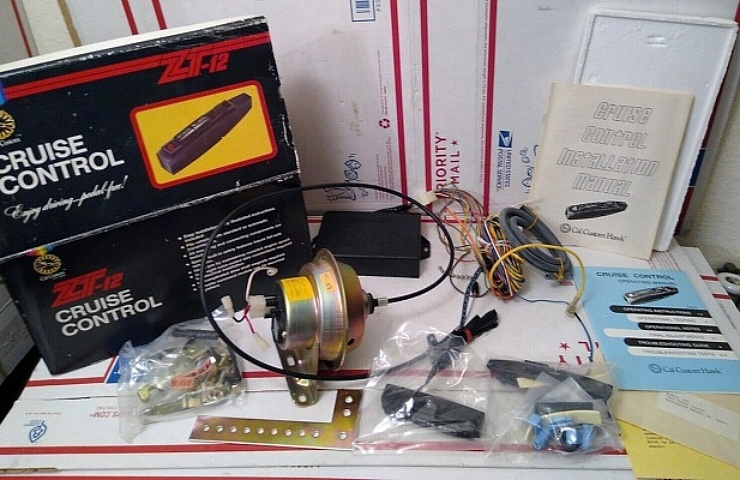
If you’re an auto enthusiast, you probably take pleasure in the response from stomping the gas pedal. But c’mon folks, we can also admit that a long highway trip is more pleasant with cruise control. Set a constant speed, lift your foot, and let the car glide down the pike.
But what if your vehicle didn’t come with cruise control? No worries. There are plenty of aftermarket kits to add cruise control to your ride. If you have some basic skills, this DIY upgrade can happen in an hour or two.
Shop now for cruise control kits
eBay Motors offers hundreds of aftermarket cruise control kits and related parts. But before you make a purchase, answer these questions:
- Is the aftermarket cruise control kit compatible with your car?
- Are your brake lights working properly?
- Are you comfortable working on your car’s electrical wiring and throttle settings?
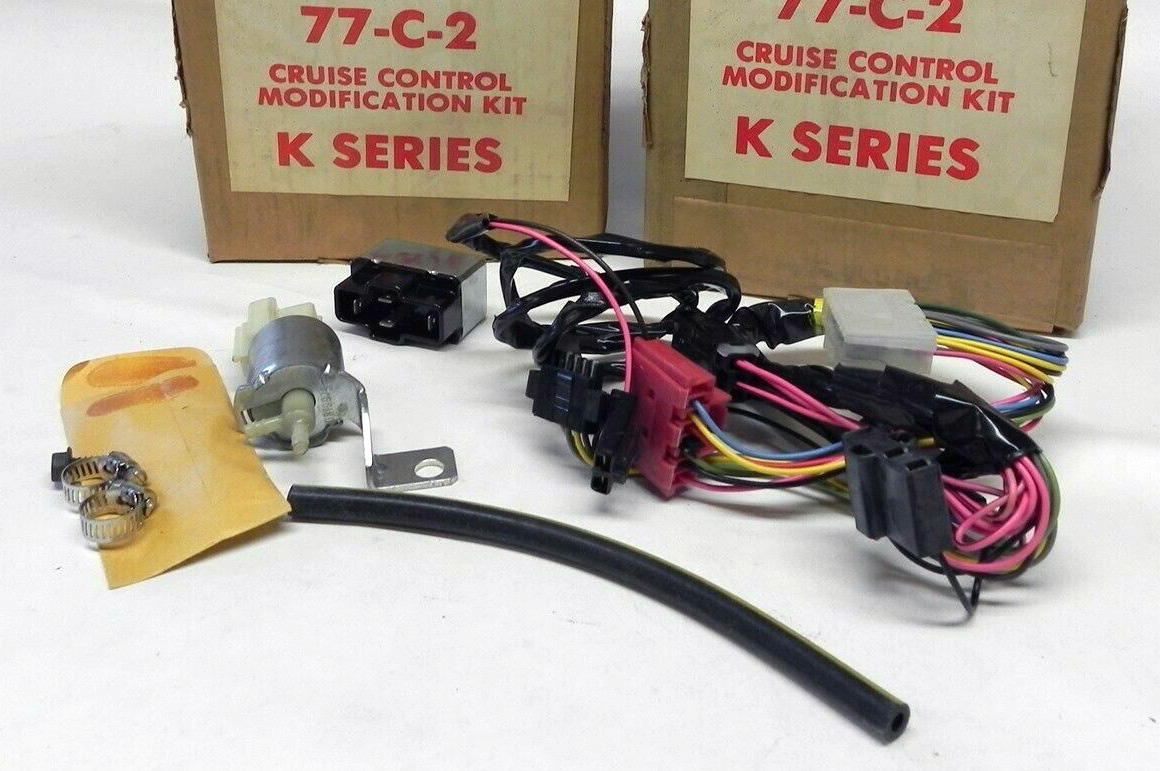
An eBay search could turn up a usable original New Old Stock (NOS) kit from the carmaker.
If you answered yes (or you’re willing to learn), then cruise control might be coming soon to your vehicle. And if you think this is beyond your skill set, most auto shops can install a kit for you.
Watch the installation of a Rostra cruise control system in a Hyundai Accent:
Tips for Installing Aftermarket Cruise Control
Here’s a quick overview of the primary components. Kits will provide detailed instructions. First things first: safety! Before starting to work on your car’s electrical system, disconnect the battery.
Wiring harness: Most kits come with a wiring harness, complete with colored wires. Instructions will guide you to wire the hot and cold sides of your brake switch. Other wires connect to the ignition “run” contact and ground. A significant step is to splice into a Vehicle Speed Signal (VSS) wire. Most cars of the past 20 years have a VSS. If not, there are adapter kits to create a signal generator or use a pick-up coil to create a similar signal.
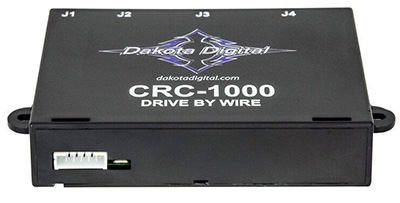
Kits often integrate with a drive-by-wire system.
Throttle cable: Attach the cable provided in the kit to the existing throttle plate of your car’s engine. Most kits also have sufficient adapters and linkages to fit a variety of throttles. Verify that the cable is not binding on anything under the hood. Aftermarket cruise control kits can also accommodate newer engines that drive by wire—and don’t have an old-school cable to control engine RPMs.
Actuator: The actuator is a mechanical box that controls your car’s cruising function. It is mounted in the engine compartment and has connectors for the wiring harness and throttle cable. It also has several DIP (dual inline package) switches. Moving specific DIP switches up or down allows the cruise control unit to communicate with essential vehicle functions. The settings include the number of engine cylinders, the type of speed sensor, and its output. To save the new settings, power off the actuator and then restore power.
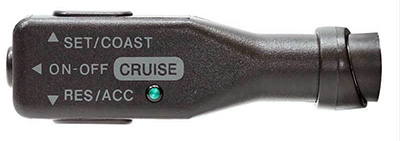
A cruise control switch integrates with the turn signal lever.
Driver switch: Many cruise control systems offer a switch on your turn signal stalk that looks like a factory installation. Others provide buttons on a dash-mounted plate. We recommend the turn signal switch, which has a cleaner look and helps keep your eyes on the road.
Testing Required
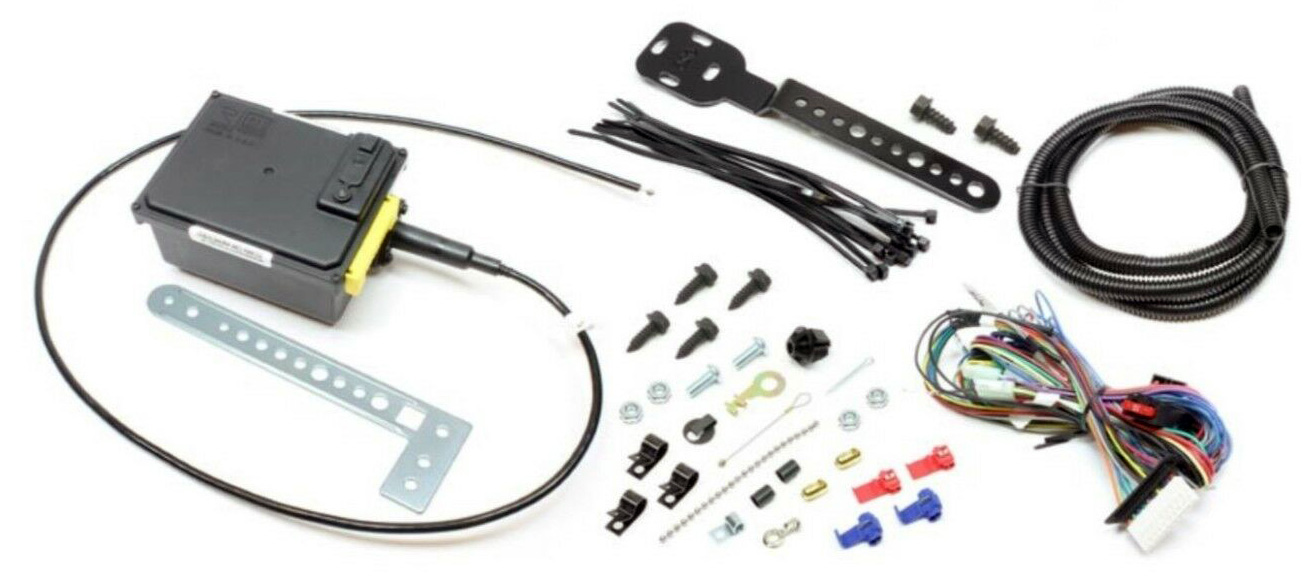
Kits are designed for specifically vehicles and provide all the necessary gear.
After completing all the steps stipulated in the kit instructions:
- Re-connect the battery.
- Check to verify that your brake lights still function correctly.
- Start the engine, leave it in Park, and mildly depress the gas pedal.
- Make sure that it returns to a slow idle setting.
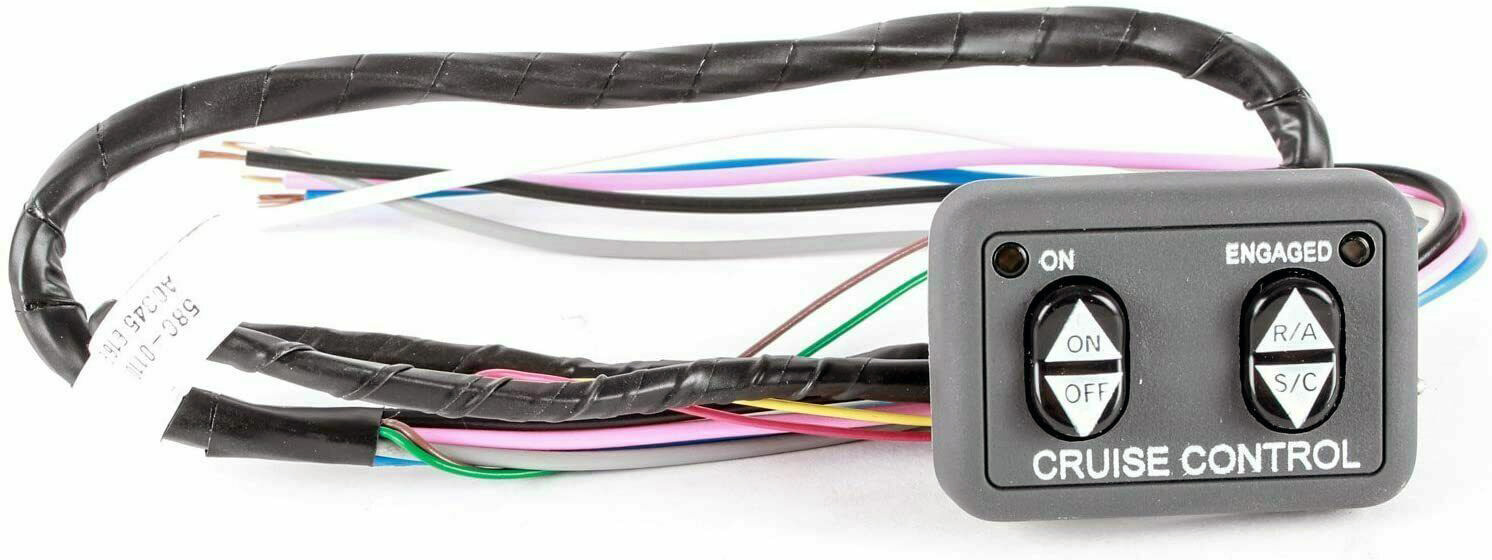
A dash-mounted controller activates cruise control.
If the brake lights and idle are working as expected, it’s time to take the car to a deserted parking lot. Next, accelerate to a moderate speed, set the cruise control, and see if the speed is maintained with your foot off the gas pedal. Finally, touch the brake pedal and verify that the cruise control disengages.
If everything is working, your car should be ready for further testing on the highway. It’s a good idea to take several short, local highway trips to verify a successful installation before heading off on a long interstate journey.
While aftermarket cruise control is available to hands-on DIYers, that’s not yet mainstream for so-called adaptive cruise control. But automated road sensing and even lane-keeping is probably not far off. For example, an aftermarket self-driving kit from Comma.ai is usually available on eBay .
About the Author
Mark C. Bach has oil in his veins and remembers feeler gauges and brake springs. He has a love for all things that move, especially old-school muscle cars. Bach writes for a variety of outlets, including Chevy Classics and FuelCurve.com, and maintains Route66pubco.com.
Recent Posts

The 1982 Daihatsu Taft Looks Tiny But Is a Genuine 4×4

1973 Ducati 750 GT Oozes ’70s Italian Exotica

A 1968 Cadillac DeVille Convertible With Acres of Flash

- Comment Policy
- User Agreement
© Copyright 2024. All rights reserved.
- Car Parts & Accessories
- Car Interior
- Steering & Suspension
- Ignition system
- All Season tires
- Summer tires
- Winter tires
- Goodyear tires
- Michelin tires
- Pirellis tires
- Cooper tires
- Brake Disc Rotors
- Calipers & Brackets
- Brake Component Kits
- Master Cylinders
- Brake Boosters
- Car & Truck Lighting
- LED Car & Truck Headlights
- Headlights for Jeep Grand Cherokee
- Headlights for Ford Ranger
- Headlights for Ford F-150
- Headlights for Nissan Sentra
- Headlights for Mazda 3

- SourcePWR PLUS ® Power Supply
- Universal and Custom Cruise Control
- Vehicle Speed Limiters
- Hands-Free Bluetooth ® Systems
- Vehicle Camera Systems
- Digital Video Recording Systems
- Parking Assistance and Blind Spot Detection
- Vehicle Seating Upgrades
Find and order a Rostra camera system with our all-new Vision Cross-Reference Tool by clicking here .
- Don't see your vehicle listed here?
- Please send us a message by clicking here and we'll be happy to assist.
Vehicle Search
- Add-On Cruise Control Systems
Universal and Vehicle-Specific Cruise Control Systems by Rostra

Universal Global Cruise
Add cruise control functionality to vehicles with a mechanically-operated throttle control system
VIEW PRODUCTS
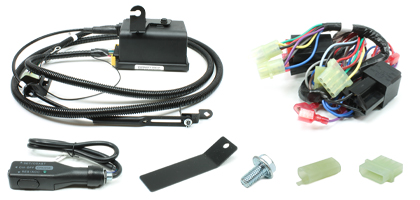
Custom Global Cruise
Rostra's popular Global Cruise available with custom throttle adapters and harnesses for specific vehicles
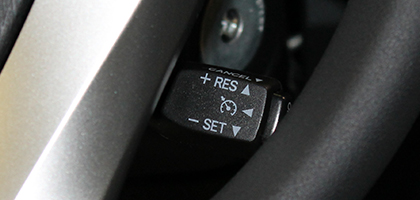
Custom Drive-By-Wire
Add-on hardware for activating built-in original equipment cruise control functionality
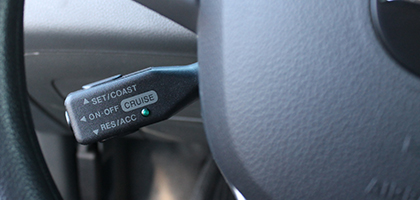
Custom Pedal Interface
Add-on cruise control hardware that interfaces directly with a vehicle's accelerator pedal to control speed
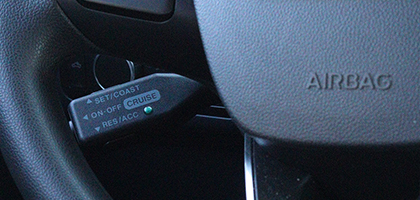
Custom Pedal Bypass
Add-on cruise control hardware that bypasses a vehicle's accelerator pedal to control speed
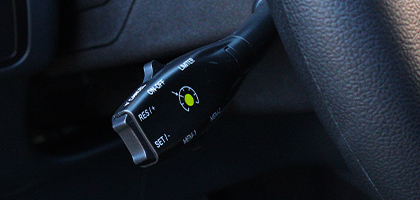
Cruise Control & Speed Limiting
Add-on cruise control systems with built-in voluntary speed-limiting capability and long-term memory
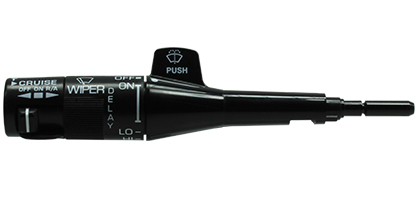
Cruise Control Switches
Multiple control switch options allow you to customize your cruise control installation to meet your needs
Rostra is a leading manufacturer of automotive comfort, safety, and convenience accessories including electronic cruise control systems, vehicle speed limiters, backup camera relocation kits, LED lighting, exterior vehicle camera systems, automotive lumbar supports and seat heaters, driver alert systems, and more.
Rostra: 2351 J. Lawson Blvd. Orlando, FL, 32824
WHAT OUR CUSTOMERS SAY
" Just what I needed for my 1962 Thunderbird! Before installing this, I would get leg cramps holding the throttle constant while cruising, I swear the throttle return spring was originally a bed spring. Installed this beauty before taking my trip down RT 66 in 2015. Finally, 7500 miles in comfort! "
Jim H. - United States
250-1223 Universal Electronic Cruise Control
" This is great. It installed pretty easily. I put it on my F-350 so I can park easier since my front camera is obstructed my LED lights and a light bar. I easily installed the sensors in the air dam below the bumper. "
Schawn D. - United States
Forward-Facing Parking Sensor System
" This installed very easily. I highly recommend it for anyone who needs this feature to make their car seat more comfortable. But this does require a high level of car handy skills, as you need to significantly disassemble a car seat. "
Sam G. - United States
Universal Lumbar Support System
" I installed this in a 2018 RZR RS one. I ride in the winter and have only a windshield. I installed the seat heater and it keeps me very warm. "
Ron B. - United States
Universal Seat Heater
" Once installed, the Jeep is more noticeable as one would expect. This is a very good safety upgrade--I was surprised DRL's were not standard on Wranglers. I have had compliments from other Wrangler owners. "
Chessie T. - United States
Jeep Wrangler LED Fender DRL
Be the first to know about special promotions and product updates.
Newsletter Signup
© 2024 Rostra Accessories
- Vision Cross-Reference
- Privacy Policy
- About Rostra
Cruise Control In Cars Explained (And How To Safely Use It)

Have you ever wished you could set your car's speed and just sit back and relax while driving on a long stretch of highway? If that's the case, then cruise control is just the ticket you've been searching for—and the good news is, it's a standard feature in most cars these days!
Cruise control is a handy feature for drivers that allows you to maintain a constant speed without having to keep your foot on the gas pedal. In this post, we'll explore how cruise control works, its benefits, and how to use it safely to make your driving experience more comfortable.
Understanding Cruise Control
Cruise control, also known as speed control, is an electronic system that allows you to maintain a specific speed without manually controlling the accelerator pedal. The system uses sensors and electronic components to control the throttle and keep your car moving at a desired speed. First introduced in the late 1950s, cruise control has since become a standard feature in most modern vehicles you see on the road today.
How Does It Work?
At its core, cruise control involves a series of sensors that monitor the vehicle's speed and a control unit that regulates the throttle. When the driver sets the cruise control to a specific speed, the system adjusts the throttle to maintain that speed. If the car begins to slow down because of an incline (e.g. going up a hill), the system will open the throttle to accelerate. Conversely, if the car starts to speed up due to a declin (e.g. going downhill), the system will close the throttle to decelerate.
Modern cruise control systems also come with additional features like adaptive cruise control (ACC), which uses radar or cameras to detect vehicles ahead and automatically adjusts the speed to maintain a safe following distance (more on this BELOW).
The History of Cruise Control
The invention of cruise control can be traced back to the late 1940s and early 1950s, when engineer Ralph Teetor developed the first-speed control system. This innovative feature was designed to help drivers maintain a steady speed, reduce fatigue while driving, and improve fuel efficiency. Over the years, cruise control technology has undergone significant advancements, leading to the development of sophisticated systems like adaptive cruise control.
Types of Cruise Control Systems
Today, drivers can choose from a range of cruise control systems, each with its own unique features and functionalities.
Conventional Cruise Control
Conventional cruise control is like your old reliable friend. It's pretty basic and doesn't have any fancy bells and whistles. You just set the speed you want, and it'll keep your car cruising along at that speed, no problem. It's perfect for those long drives on open highways, but it doesn’t automatically react to other cars on the road.
So, if the car in front of you slows down, you'll need to step in and adjust your speed manually. This trusty system comes standard on most cars and is great for saving some fuel on those long road trips .
Adaptive Cruise Control (ACC)
Now, if conventional cruise control is your old reliable friend, then Adaptive Cruise Control (ACC) is like that friend's tech-savvy younger cousin. ACC isn't just maintaining your set speed, it's also keeping an eye on the car in front of you. If that car slows down, ACC slows your car down to keep a safe distance .
It's like having an extra set of eyes on the road, making highway driving a breeze. Plus, some ACC systems can even handle stop-and-go traffic, bringing your car to a full stop and then picking up speed again when traffic gets moving.
Predictive Cruise Control
Predictive Cruise Control is like the fortune teller of cruise control systems. It uses GPS and map data to see into the future and predict what's coming up on the road, like hills or curves, and adjusts your speed accordingly. This means you get a smoother ride and better fuel efficiency, but it all depends on the quality of the GPS and map data. If that's a bit out of date, your fortune-telling cruise control might not be so accurate. It's usually found in more high-end vehicles where top-notch fuel efficiency is a focus for the engineers.
Cooperative Adaptive Cruise Control (CACC)
And then we have Cooperative Adaptive Cruise Control, or CACC. This is like the team player of cruise control systems. It allows cars to talk to each other, coordinating their speeds to maintain a safe distance. It's like having a well-coordinated team of cars all working together to make the traffic flow smoother and reduce congestion. Picture it like a synchronized dance on the highway, where every car knows its place and keeps the right distance. This tech is still pretty new, but it's got a lot of potential. Imagine a future where traffic jams could be a thing of the past.
Remember, these systems are here to make your drive smoother and safer, but they're not a replacement for your attention. No matter how fancy your cruise control is, these systems can be greatly influenced by external conditions like weather and traffic, and they should always be used as aids, not replacements, for attentive driving.
Common Cruise Control Symbols and Indicators
Understanding the various symbols and indicators associated with cruise control is important for safe and effective usage. These symbols typically appear on the dashboard (or on the side of the steering wheel) and may include a speedometer icon, "SET," "RES" (resume), and "CANCEL". Be sure to consult your vehicle's owner's manual for specific details and explanations of these symbols.
Benefits of Using Cruise Control
Cruise control offers several benefits to drivers, especially during long road trips or highway driving.
Fuel Efficiency
One of the main advantages of using cruise control is improved fuel efficiency. By maintaining a constant speed, cruise control helps reduce fuel consumption, leading to better gas mileage. Rapid acceleration and deceleration, on the other hand, can lead to increased fuel consumption.
Comfort and Convenience
Cruise control allows drivers to take their foot off the accelerator pedal, reducing fatigue and improving comfort during long drives. It also helps drivers avoid unintentionally exceeding the speed limit by setting a maximum speed.
When used correctly, cruise control can contribute to safer driving. By maintaining a steady speed, it reduces the likelihood of erratic driving behavior and potential accidents. However, it is important to note that cruise control shouldn't be used in certain conditions, such as heavy traffic or slippery roads .
Troubleshooting Common Cruise Control Issues
Occasionally, you may encounter issues with your cruise control systems. Common problems include cruise control not engaging or disengaging unexpectedly. Possible causes may include a faulty brake light switch, malfunctioning sensors, or issues with the control module. If you experience any problems with your cruise control, it's best to have a qualified technician diagnose and repair the issue for you.
Cruise Control and Road Etiquette
Practicing proper road etiquette while using cruise control is essential for a safe and pleasant driving experience. Here are some tips on how to use cruise control courteously:
- Avoid using cruise control in heavy or congested traffic, as it may hinder your ability to react quickly to changing conditions.
- Be mindful of other drivers when setting your speed. Avoid setting a speed that's significantly slower or faster than the flow of traffic.
- If you are in the passing lane and using cruise control, be sure to adjust your speed or temporarily disengage the system to allow faster-moving vehicles to pass.
- Always signal your intentions, such as lane changes or exiting the highway, even when using cruise control.
The Future of Cruise Control Technology
Cruise control technology plays a vital role in the development of autonomous vehicles, or self-driving cars . In autonomous vehicles, cruise control systems work together with other advanced driver assistance systems (ADAS) to enable the vehicle to operate without direct driver input. These systems include lane-keeping assist, automatic emergency braking, and collision avoidance systems.
As autonomous vehicles become more sophisticated, cruise control technology is evolving to support higher levels of automation. For example, some autonomous vehicles are equipped with advanced cruise control systems that can navigate complex traffic scenarios, merge onto highways, and even change lanes autonomously.
While fully autonomous vehicles are still in the developmental stages, the integration of cruise control technology is a big step toward creating safer and more efficient transportation systems.
As automotive tech continues to advance, cruise control systems are becoming more intelligent and capable. Here are some potential developments we can expect to see in the future of cruise control technology:
- Integration of artificial intelligence (AI) to improve decision-making and responsiveness in adaptive cruise control systems.
- Enhanced connectivity and vehicle-to-vehicle (V2V) communication, enabling cars to share information about traffic conditions and coordinate their speeds for smoother traffic flow.
- Greater customization and personalization options, allowing drivers to set preferences for cruise control behavior, such as following distance and speed adjustments.
Overall, the future of cruise control technology holds promise for creating a more seamless and enjoyable driving experience, with a focus on safety, comfort, and sustainability.
Debunking Myths About Cruise Control
Let's address and debunk some common misconceptions about cruise control:
Myth : Cruise control can be used as a substitute for driver attention.
Fact : Cruise control is a driver assistance feature, not a replacement for attentive driving. Drivers should always remain alert and ready to take control when necessary.
Myth : Cruise control increases the risk of accidents.
Fact : When used appropriately, cruise control can contribute to safer driving by maintaining a steady speed and reducing erratic driving behavior.
Cruise control is a valuable feature that can enhance your driving experience by providing comfort, convenience, and fuel efficiency. Remember to use it safely and appropriately based on driving conditions, and always stay attentive while on the road.
If you found this post informative and want to learn more about car features, driving tips, and automotive technology, be sure to subscribe to our newsletter for regular updates. We're here to help you stay informed and enhance your driving experience.
Frequently Asked Questions About Cruise Control
To further enhance your understanding of cruise control, here are answers to some common questions:
Q : Can cruise control be used in all weather conditions?
A : It isn't advisable to use cruise control in adverse weather conditions, such as heavy rain, snow, or icy roads, as it may reduce your ability to respond quickly to changing road conditions.
Q : Can I use cruise control in urban areas with frequent stop-and-go traffic?
A : Cruise control is best suited for open roads and highways with consistent traffic flow. It isn't recommended for use in urban areas with frequent stops or heavy traffic.
Q : Does cruise control work at any speed?
A : Cruise control typically has a minimum speed threshold, below which it can't be engaged. This threshold varies by vehicle, so check your owner's manual for specific information.
About the Author: This article was crafted by the LOOP Marketing Team. Comprising of seasoned professionals with expertise in the insurance industry, our team is dedicated to providing readers with accurate, up-to-date, and valuable information. At LOOP, we're passionate about helping families navigate the world of car insurance, ensuring they get the best coverage at the most affordable rates. Learn more about our mission and values here.
For more insights on auto insurance and other related topics, visit our blog .
Quick Navigation
Check out how much you could save today.
Browse related articles

Steer Across Borders: International Driving for Your Next Vacation

Good Debt Vs. Bad Debt: What'S The Best Way To Think About Debt?

Tips For Staying Safe While Driving In The Winter
Life has many roads. your weekly navigator is just a click away..
Canada's 10 hottest auto brands, vehicles at the start of 2024
How j.d. power's top initial quality picks fare 3 years later, the rcmp used a 1962 vw beetle to keep the yukon safe, rivian teases 5 new models, including 'affordable mass-market', suv review: 2024 hyundai kona n line | reviews, what is cruise control a comprehensive guide.
When the system is set, cruise control will maintain a steady speed for your vehicle
You can save this article by registering for free here . Or sign-in if you have an account.
Article content
Your vehicle’s cruise control system unlocks numerous benefits at the touch of a button — but according to web search data, drivers still have plenty of questions about what it is, what it does, and how it works.
Don't navigate the car buying road alone!
Join our thriving community on social media and connect with other car searchers and enthusiasts.
What is Cruise Control? A Comprehensive Guide Back to video
Below, we’ll answer some of the most popular Internet search questions about cruise control, so you can make the best use of this important system.
What is Cruise Control?
With cruise control, your vehicle will maintain a steady speed when the system is set.
What is adaptive cruise control?
With adaptive cruise control, the vehicle will also automatically slow down and speed up to maintain a safe position in traffic.
How does cruise control work?
Cruise control work with a manual transmission just the same way it does with an automatic. Drivers set their cruising speed with a button press, and the system works the throttle automatically to maintain the desired cruising speed as evenly as possible. In some vehicles with a manual transmission, pressing the clutch pedal to shift gears turns the cruise control off, requiring an additional button press to reengage it after a gear change.
In other cars with a manual transmission, pressing the clutch pedal simply pauses the cruise control system a moment, allowing drivers to complete their gearshift. When they’ve released the clutch, the cruise control picks up where it left off — no additional button press required.
Is cruise control more fuel efficient?
Yes. Increasing your vehicle’s speed uses fuel. While cruising, even a highly competent driver who isn’t using cruise control will tend to slow down and speed up in a repeated cycle, possibly several times per minute. Though fluctuations in speed may be slight, they do cause your engine to use more fuel than required. Point is, the more time you spend at a steady speed, the less fuel your engine needs.
For most drivers, using cruise control on the highway at 80 km/h can reduce fuel consumption by about 20 per cent. For drivers who find difficulty in maintaining a steady speed and frequently experience big fluctuations, using cruise control can cut fuel use by over 40 per cent.
Depending on what you drive and how fast you drive it, using cruise control could save you between $4 and $20 per hour — based on information from Natural Resources Canada that shows most drivers who don’t use cruise control on the highway will tend to experience a 10 km/h speed fluctuation about three times per minute.
Drivers who have the most difficulty managing their cruising speed could be using 60 per cent more fuel than they need to.
Is cruise control bad for your transmission?
No. Your vehicle’s engine, transmission and other components are designed to work hand-in-hand with its cruise control system and are extensively tested and integrated with one another for trouble-free performance.
Using cruise control also reduces wear and tear on both your engine and transmission by running things more smoothly and steadily, and reducing workload on both components.
Can you add cruise control to a car?
Yes. Depending on the year, make and model, cruise control may be available for add-on or retrofit. Professional installation is recommended, and you’ll want to talk to a professional about the specific availability of parts and integration for your vehicle.
In many cases with modern cars, it’s generally easier and more cost effective to just opt for a unit equipped with cruise control from the factory. Cruise control is widely available as standard equipment on most modern vehicles.
Can cruise control get stuck?
Yes , but it’s extremely rare. Older cable-based cruise control systems seem more prone to this rare problem, in which the cable can slip or bind, making the throttle stick into position. More modern vehicles with electronic throttle and monitoring systems make this problem even less likely.
If the cruise control on your car fails to disengage when you want to slow down, slip the vehicle into neutral to disconnect drive power from the wheels, pull over, and address the situation.
However, chances are, you’ll never experience this problem.
When should cruise control be used?
Any time you’re trying to drive at a constant speed. Whether around town at 60 km/h, in a residential area at 40 km/h, or out on the highway at 105 km/h, switching the cruise control on makes for a smoother and more fuel efficient drive that’s easier on your engine and transmission. it can also help you do your part to maintain the steady and efficient flow of traffic.
Most cruise control systems can be engaged at speeds above 30 km/h.
When should cruise control not be used?
Any time you can’t safely drive at a steady speed. If the road surface is snowy, icy, slushy or very wet, you’ll want to think twice about switching your cruise control on.
In older cars, having your cruise control engaged on a wet or icy road could allow the vehicle to accelerate or experience wheelspin when driven wheels encounter a low-traction surface. Here, the cruise control system maintains throttle pressure, even in situations where it should be released instead. This could lead to a loss of control.
In more modern vehicles, electronic monitoring is used to automatically disengage cruise control when one of the following happens:
- one or more wheels slip
- one or more wheels leave the surface of the road after a major bump or dip
- the wipers are set to the maximum speed setting in heavy rain
Use your judgement. Safely navigating certain slippery or dangerous driving conditions requires careful manual control of your vehicle’s throttle, and in these situations, you’re best to leave the cruise control off.
What causes cruise control to kick off?
If the cruise control in your vehicle suddenly kicks off, a few things may be to blame.
Sometimes, cruise control disengages automatically when the vehicle’s automatic wipers detect heavy rainfall, or when a wheel spins or (briefly) leaves the surface of the road after a big bump or dip. In other situations, there may be a problem with one or more sensors or switches, including the brake pedal switch, throttle position sensor, or one or more wheel speed sensors.
Your modern cruise control system relies on various sensors and switches to do its job properly. As a failsafe, any problem with these sensors can cause the cruise control system to go offline. If you notice this happening regularly, have your vehicle diagnosed by a professional.
Will the cruise control work with an ABS light on?
Probably not. Your car’s Antilock Braking System works hand-in-hand with your cruise control system, and any fault with the ABS system will typically take your cruise control offline until it’s fixed.
An ABS warning light in your instrument cluster can indicate one of several major problems or malfunctions, so be sure to have a professional investigate as quickly as possible.
Will cruise control apply the brakes?
No, but adaptive cruise control will. Standard cruise control (simply called cruise control) holds your vehicle’s speed as constant as possible once set. More advanced adaptive cruise control systems use camera or radar-based sensing to determine the traffic situation in front of your vehicle, and can automatically apply the brakes to maintain a pre-set following distance.
With cruise control, drivers need to brake to slow down as they close in on a slower vehicle in traffic. With adaptive cruise control, the system makes these braking inputs automatically, and the vehicle speeds back up to its pre-set cruising speed once traffic clears.
Before you buy, be sure to determine which type of cruise control system is fitted to the car you’re considering.
What is Super Cruise?
Super Cruise is a next-level driver assistance feature available on certain GM vehicles.
With Super Cruise, the vehicle uses special GPS hardware and sensors to accurately compare its position to a 3D map of pre-qualified highways .
On these pre-qualified highways, Super Cruise allows drivers to go hands-free for extended periods as the vehicle automatically maintains its cruising speed, adjusts that speed for changing traffic conditions, and even precisely follows the curves in the road. It can even make hands-free lane changes.
Super Cruise is not an autonomous system, and in order for it to work, drivers need to keep their eyes on the road — there’s even a camera that monitors the position of the driver’s eyes to make sure they’re focused on the road ahead.
Sign up for our newsletter Blind-Spot Monitor and follow our social channels on Instagram , Facebook and X to stay up to date on the latest automotive news, reviews, car culture, and vehicle shopping advice.
- Bernd Mayländer: F1's Mr. Safety Car
- Commercial trucks are going electric, but it's going to be a long road
- Evolutionary: The Mercedes-Benz G-Wagen has never strayed far from its roots
- How to jump-start a car—a step-by-step guide
- Testing Mitsubishi’s AWD systems and Snow mode on ice
Justin Pritchard
Justin Pritchard is an experienced motoring expert whose work is read and watched by Canadians across the country on a weekly basis. Starting his career at Auto123.com back in 2005 (while finishing his final year of studies at Laurentian University in Sudbury, Ontario), Justin quickly applied his passion for writing, presenting, and photography, working under some of the most recognized editors in the Canadian motoring scene.
Justin has written one of the largest collections of used car buyer guides on the internet, and his TV program, AutoPilot, has aired over 600 episodes across 16 seasons. Presently, AutoPilot is the only English-language motoring program on Canadian cable TV, though he's lent his informative style and easy-to-identify voice to video features for Youtube, Driving.ca, Autotrader.ca, Motoring TV, and elsewhere. With 4 years as co-chair of the Canadian Car of the Year Awards (CCOTY) program, a passion for vehicle testing shines though in all of his work.
A passion for photography from a young age makes Justin as comfortable behind the camera as in front of it, and capturing motoring memories from the scenery of beautiful Northern Ontario is a priority in much of his work. The particularly harsh winter climate in this part of Canada makes Justin a particular expert on winter driving, winter tires, and extreme-weather safety.
Major awards won by the author
Contact info.
Youtube: @JustinPritchard
Postmedia is committed to maintaining a lively but civil forum for discussion. Please keep comments relevant and respectful. Comments may take up to an hour to appear on the site. You will receive an email if there is a reply to your comment, an update to a thread you follow or if a user you follow comments. Visit our Community Guidelines for more information.
Affordable EVs
Small trucks
Popular Crossover SUVs
Practical 3-row SUVs
Minivans for the whole family
Compact Cars
Luxury SUVs
Affordable AWD SUVs
All things automotive: breaking news, reviews and more. Wednesdays and Saturdays.
- There was an error, please provide a valid email address.
A welcome email is on its way. If you don't see it, please check your junk folder.
The next issue of Driving.ca's Blind-Spot Monitor will soon be in your inbox.
We encountered an issue signing you up. Please try again
Best Car Accessories Every Driver Should Buy
There's lots of aftermarket gear out there, but get these add-ons first—they'll make your daily drive more comfortable and safe
Best Trailer Accessories and Gear for Summer 2024
Best trailer accessories and towing equipment for those getting away from it all – and taking it with them.
Best retrofit Apple CarPlay and Android Auto units
You don't need to buy a new car to add Apple CarPlay or Android Auto.
Best Camping Gear for Summer 2024
Equipment for those of us hitting the great outdoors this summer
Best Car Wax—the top rated car waxes online
There are a lot of options when it comes to car wax. To make things easy for you, here are the top rated car waxes online.
This website uses cookies to personalize your content (including ads), and allows us to analyze our traffic. Read more about cookies here . By continuing to use our site, you agree to our Terms of Service and Privacy Policy .
Edit your picks to remove vehicles if you want to add different ones.
You can only add up to 5 vehicles to your picks.
Looks like you've reached your saved article limit!
You can manage your saved articles in your account and clicking the X located at the bottom right of the article.
Ad-free. Influence-free. Powered by consumers.
The payment for your account couldn't be processed or you've canceled your account with us.
We don’t recognize that sign in. Your username maybe be your email address. Passwords are 6-20 characters with at least one number and letter.
We still don’t recognize that sign in. Retrieve your username. Reset your password.
Forgot your username or password ?
Don’t have an account?
- Account Settings
- My Benefits
- My Products
- Donate Donate
Save products you love, products you own and much more!
Other Membership Benefits:
Suggested Searches
- Become a Member
Car Ratings & Reviews
2024 Top Picks
Car Buying & Pricing
Which Car Brands Make the Best Vehicles?
Tires, Maintenance & Repair
Car Reliability Guide
Key Topics & News
Listen to the Talking Cars Podcast
Home & Garden
Bed & Bath
Top Picks From CR
Best Mattresses
Lawn & Garden
TOP PICKS FROM CR
Best Lawn Mowers and Tractors
Home Improvement
Home Improvement Essential
Best Wood Stains
Home Safety & Security
HOME SAFETY
Best DIY Home Security Systems
REPAIR OR REPLACE?
What to Do With a Broken Appliance
Small Appliances
Best Small Kitchen Appliances
Laundry & Cleaning
Best Washing Machines
Heating, Cooling & Air
Most Reliable Central Air-Conditioning Systems
Electronics
Home Entertainment
FIND YOUR NEW TV
Home Office
Cheapest Printers for Ink Costs
Smartphones & Wearables
BEST SMARTPHONES
Find the Right Phone for You
Digital Security & Privacy
MEMBER BENEFIT
CR Security Planner
Take Action
Guide to Adaptive Cruise Control
How this convenience feature works to reduce your stress on long drives
Adaptive cruise control (ACC) is like traditional cruise control, but smarter. ACC systems allow you to set a desired speed until your vehicle encounters slower-moving traffic. Then it will brake to maintain a set distance from the car ahead. Once the traffic starts moving again or if there is no longer a car in the lane ahead, ACC will accelerate to resume the previous set speed. Although ACC systems may take some getting used to, our survey respondents told us they appreciated the stress relief the feature brings.
“I use the feature mostly on the freeway and in stop-and-go traffic. I find it reduces tension and fatigue,” wrote a 2020 Subaru Outback owner. A 2018 Audi Q5 driver agreed. “It is so nice to just set it and let the car worry about the traffic,” they told CR.
The systems use lasers, radar, cameras, or a combination of those. If traffic slows to a stop, most ACC systems will bring the car to a complete stop, then bring it back up to speed when traffic gets going again. Others work only within certain speeds and/or might not start to accelerate automatically.
Adaptive cruise control (ACC): Cruise control that also assists with acceleration and/or braking to maintain a driver-selected gap to the vehicle in front. Some systems can come to a stop and continue while others cannot. If the car comes to a full stop, you may have to press the accelerator or a button on the steering wheel to start moving again.
Not all systems work at low speeds, so drivers who plan to use ACC in slow traffic should check the limitations of any system they plan to buy. These particular systems will often have the words “traffic jam” or “stop and go” in their name.
These features are usually activated using a button on the steering wheel with the image of a car next to a speedometer with an arrow pointing at it. A conventional cruise control system does not automatically keep a set distance away from the car in front, and it is indicated by a similar logo without the car next to the speedometer. A tip to know if your car has adaptive cruise control or regular cruise control is to look for the “gap distance” button, which usually shows a symbol of a car with horizontal distance bars in front. This button will determine how much space your car leaves between its front bumper and the rear of the car it is following.
In our most recent survey, we asked CR members to rate their experiences with the advanced safety and driver assistance systems on their model-year 2017 to 2022 cars. Respondents answered questions about their satisfaction with the systems. The survey covered about 47,000 vehicles. Most respondents told us they were “very satisfied” with ACC. Satisfaction was higher for older drivers.
OVERALL SATISFACTION
What to Look For in an Adaptive Cruise Control System
Every ACC system works slightly differently, says Kelly Funkhouser, manager for vehicle technology at CR. Some do a better job than others at recognizing merging traffic and automatically apply the brakes, while others wait too long to slow your car, requiring the driver to take control—especially when a vehicle in front of you cuts you off with a close merge.
“Most ACC systems can only be set to speeds above 20 mph but will slow the vehicle to speeds below that in stop-and-go traffic,” she says. “There are a few systems out there that don’t bring the car all the way to a stop but instead just shut off at low speeds. That can be dangerous when you’re traveling behind another slowing vehicle.” She recommends reading the automaker’s website closely and learning about the speed ranges before using ACC while on your test drive.
ACC is meant for convenience, not as a replacement for an alert driver, Funkhouser says. So don’t use adaptive cruise control as an excuse to get distracted. “Just because the car is controlling your speed doesn’t mean that you can check out,” she says. “These systems do not do well at detecting or slowing for vehicles ahead if you approach them at a high rate of speed. The driver should always be monitoring the surrounding traffic and looking ahead for potential hazards.”
Keith Barry
Keith Barry has been an auto reporter at Consumer Reports since 2018. He focuses on safety, technology, and the environmental impact of cars. Previously, he led home and appliance coverage at Reviewed; reported on cars for USA Today, Wired, and Car & Driver; and wrote for other publications as well. Keith earned a master’s degree in public health from Tufts University. Follow him on Twitter @itskeithbarry .
Sharing is Nice
We respect your privacy . All email addresses you provide will be used just for sending this story.
Trending in Car Safety
Popular Cars to Avoid and What to Buy Instead
Most Reliable 3-Year-Old Cars and SUVs That You Can Buy Right Now
Best Used Cars and SUVs Under $20,000
Best Cars of the Year: 10 Top Picks of 2024
Cruise Control Explained: How It Works, And When You Should Use It
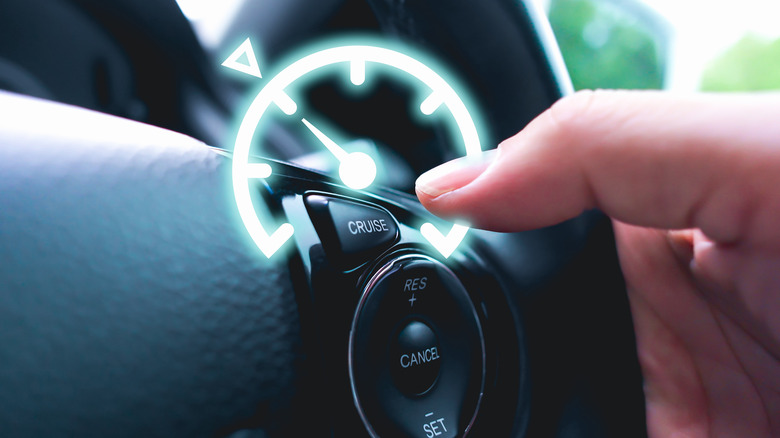
Self-driving cars are becoming increasingly intelligent , but whether they'll ever be ubiquitous and fully capable remains unclear. Tesla notes (for now) that its Full Self Driving Capability is "intended for use with a fully attentive driver, who has their hands on the wheel and is prepared to take over at any moment." For many drivers at present, the automatic functions of their cars are limited to the likes of beeping sensors, flashing displays, and features like cruise control.
Cruise control is a feature provided as standard on a wide range of vehicles; it's one of those functions that some drivers adore and others barely use. While the feature doesn't take over from the driver by any means, it can significantly ease their burden. Essentially, cruise control allows drivers to select an appropriate speed for the road, conditions, and general journey they're currently on, and automatically prevents the vehicle from deviating from that speed.
Experienced drivers, of course, will probably be familiar with the basics of what cruise control does, even if they haven't really used it themselves. Rather more complex than that, though, is the question of exactly how it keeps the vehicle moving at a specific speed. If you've ever wondered how cruise control works, what the pros and cons of using it are, how it's developed since its introduction, and/or when to use it, this is just the piece for you.
The essentials of how cruise control works
Cruise control as we know it today has its roots in the ingenuity of Ralph Teetor. Though he lost his vision following an accident, Teetor rose to become the president of the Society of Automotive Engineers. In that capacity, he used both his passion for auto safety and his extensive experience with other drivers to create the first example of cruise control. In 1950, Teetor held a patent for technology referred to as a "Speed Control Device For Resisting Operation Of The Accelerator," also called the Speedostat, and it worked just as the name implied: the driver could opt for a certain speed by selecting it from the dash, then, through the drive shaft, a piston would provide resisting force on the pedal after arriving at that speed.
The basics of how cruise control functions haven't actually changed very much. Depending on the vehicle model, the input for choosing the desired speed may now be a touchscreen, but the effect is the same: a connected actuator receives the signal from the control device, and, as it runs to the valve for the throttle, is used to control the strength of the force acting on the throttle. Accelerating faster or slower depending on how much faster the inputted speed is, the vehicle will then reach said speed and hold the accelerator in place (though not necessarily physically as Teetor's Speedostat did). This is a mechanically-oriented form of cruise control, but some modern vehicles utilize adaptive cruise control instead.
How is adaptive cruise control different?
The basic concept of cruise control, of course, is centered more around what the specific vehicle is doing, rather than what's on the road around it. Drivers can simply brake as they typically would in response to other drivers, overriding the constant-speed effect of cruise control, which means that autonomy isn't really a factor in cruise control beyond maintaining the speed. Adaptive cruise control like the kind found in some Acura vehicles , however, is a little more sophisticated.
Adaptive cruise control is a feature more able to do exactly that: adapt. This means that while the driver selects the vehicle's cruising speed as before, it is not locked to that speed. Another crucial thing to take into account is the vehicle's distance from others; adaptive or autonomous cruise control adds small and discreet radar systems (inputs situated somewhere near the vehicle's front lights) to the equation to monitor the surrounding area. These radars have ranges from approximately 100 feet to around 600 feet, depending on the vehicle.
A car with ACC will commonly boast small wheel-mounted units that measure its speed, along with a front-mounted one that can determine how far away other vehicles are. The former can adjust how fast your vehicle is moving relative to any motorists ahead, thereby ensuring that you always maintain your selected distance from them. Braking capacity while the system is active differs, but typically, the driver will be alerted to brake heavily if necessary (if a driver ahead does the same for instance).
When cruise control should be used
Some drivers often have the luxury of wide, peaceful, near-empty roads. For others, driving tends to be a commuter's cacophony of traffic jams, honking horns, and slow stop-start-stop-start progress. The experience can differ greatly depending on the time of day and whether it's a weekday or the weekend. The bottom line, though, is that one of these scenarios is a far better fit for cruise control than the other.
Brakes remain operational during the use of cruise control, and engaging them will override the system. This means two things: the driver's attention must still firmly remain on the road as ever (we're not at level 5 on the autonomous driving scale here) and cruise control has sharply decreased utility in congested areas. By contrast, if you're a driver who frequently takes long-distance trips on open roads, cruise control could be the perfect feature for you. An alert and rested driver is a safe driver, and where longer journeys can compromise those things, cruise control reduces some of that pressure.
Adaptive cruise control, which monitors the ever-changing road ahead continuously via radar or laser, is potentially better equipped to handle congested roads. There's no definitive answer on whether that's the case, however, because this feature is very different from vehicle to vehicle.
Different manufacturers have different cruise control features
Cruise control is a common feature, and adaptive cruise control is becoming increasingly widespread too. The matter of how the two types of cruise control work is a very complex one beyond the basics, though, because different vehicle manufacturers have developed their own unique features for it and implemented the system in different ways.
For example, Audi's Traffic Jam Assist technology can be activated in tandem with its adaptive cruise control, thereby supporting the driver in conditions that aren't optimal for the latter. By means of ultrasonic sensors, radar, and a windshield camera, the vehicle will maintain a consistent distance from the one ahead in traffic while staying oriented on the road. The driver takes full manual controlwhen the congestion clears or Traffic Jam Assist otherwise becomes unsuitable for the situation.
Similarly, select Ford models are among those that offer Intelligent Adaptive Cruise Control, implementing advanced features such as Speed Sign Recognition (which aims to prevent adaptive cruise control users from being caught out by speed limits by adjusting the chosen speed to match them) and Stop-and-Go (limited capacity to stop entirely in response to a vehicle ahead doing the same). As always, drivers should consult their vehicle manual to determine which cruise control features are available and how to use them.
Pros and cons of cruise control and adaptive cruise control
Cruise control can be advantageous for drivers in other ways too. In its capacity to ensure a vehicle remains at a steady speed, where possible, it can boost driving efficiency. According to Natural Resources Canada , varying your speed by around 6 mph every 18 seconds can be 20% more costly in terms of fuel. Cruise control, in a general sense, aims to be as efficient as possible within the parameters the driver provides, which can potentially translate to less fuel being used over time.
This is only the case when driving for longer stretches on wide, clear roads, however. The reason is that there are certain things human drivers are better at than their machine counterparts, and adjusting speed subtly in response to changes in elevation is one of them. Failing to do so can be wasteful.
On a similar note, Vanderbilt University found that drivers are more adaptable in their thinking and processing of multiple vehicles and their movements on the road, while cruise control features tend to have a rather narrower focus in terms of the vehicle(s) in front. Cruise control can serve as an invaluable tool for drivers, but isn't infallible. Ensuring that you use it for its intended purpose is the key to best taking advantage of it.
LATEST DEALS:
- Hyundai Tucson
- Toyota Yaris Cross
- Citroën C5 Aircross
Back to top

What is cruise control and should you have it on your next car?
Cruise control can take the strain out of long drives and save you from a speeding fine – here's how it works, when to use it and what adaptive cruise control systems do....

Land Rover Discovery Sport
New citroën c3, volkswagen touran.
Modern cruise control is an electronic system that controls the speed your car travels at. Once you’ve set it, the car will carry on driving at the speed selected without you needing to have your foot on the accelerator pedal.
It’s a useful aid for when you’re driving on motorways or A-roads that stops the car’s speed from creeping upwards unintentionally and ensures you don’t break any speed limits . It’s also good for easing foot fatigue and strain on long drives.
What is adaptive cruise control?
More complex adaptive cruise control (ACC) systems alter the speed the car is travelling at to keep it a set distance from the vehicle in front, and some systems can keep control of the driving in stop-start traffic jams.
The most advanced cruise control systems also work with a car’s advanced driver assistance features to ensure the car stays in its lane, in the right place on the road when cornering and reacts to avoid potential collisions with other vehicles and road users.
Some systems work with the car's speed-limit recognition technology and are able to automatically adjust the vehicle's speed accordingly.

How does cruise control work in a car?
Older cruise control systems controlled a vehicle's speed with a cable, but the latest versions use electronic sensors, speed detectors (such as radar) and a control module to ensure the car maintains a constant speed from the vehicle in front. They allow the driver to set their desired speed and stick to that even if the car goes up or down a steep incline.
Buttons to set and cancel the cruise control are often sited on the car’s steering wheel, but they can also be located on a stalk control, either as a dedicated unit or integrated into the indicator stalk. To activate the cruise control you should accelerate to the speed you want your car to travel at, and then press the set button. Many systems let the driver adjust the distance between their car and the one in front.

There are also buttons that allow you to increase or decrease the set speed by increments of 1mph without touching the accelerator or resetting the system. Often you can vary the speed in 5mph increments by pressing these buttons for longer.
Cruise control can be overridden by the driver by tapping the brake pedal, and you can still accelerate in the normal way. Some systems will continue to work afterwards if you’ve intervened briefly to make a manoeuvre such as avoiding a pothole.
Some cruise control systems also have short-cut controls to reactivate cruising at the previous speed with a single pull of a lever or tap of a button.
When should you use cruise control?
Cruise control is best suited to long-distance motorway or A-road driving when you’ll be driving for miles without any speed limit changes and with minimal steering input. Most systems only work at speeds above 25mph, so you’re unlikely to be able to use it on busy, urban roads where the average speed is low and you’ll be doing a lot of stop-start driving.
When shouldn’t you use cruise control?
Standard cruise control isn’t good for roads with lots of bends or stop-start traffic because you may have to deactivate the system frequently while negotiating these.
However, some of the most sophisticated adaptive cruise control systems are able to bring a car to a halt in its lane on a motorway if there is a brief traffic jam and then pull away again as the other vehicles start to move.
These systems use radar to monitor the speed of other vehicles and this means they can be better than the driver at anticipating hold-ups and slowing the car down in good time. Other systems use the car's own sat-nav to read the road ahead.

It’s not recommended to use cruise control in very bad weather, such as torrential rain, hail, fog or snow because these conditions can reduce the ability of the sensors to properly detect other traffic.
We also wouldn’t advise using cruise control if you’re feeling tired because, with less to do behind the wheel, there’s more danger that you could fall asleep.
Can you brake while using cruise control?
If your car has adaptive cruise control it will automatically apply the brakes and accelerator to keep the car a set distance from the vehicle in front.
However, if you need to brake manually to avoid an obstacle or other unexpected danger while the cruise control is on, you should do so. On most systems, this will deactivate the system, and you will have to reactivate it, although some will restart automatically after you’ve intervened. If you only want to decrease the speed by a small amount, the easiest way to do this is to use the minus button on the cruise control system.

How can I tell if my car has cruise control?
The best way to check if your car is fitted with cruise control, and if so what type and how to use it, is to check your owner’s manual. However, if the car has buttons on the steering wheel that say ‘cruise’, ‘cancel’, ‘res’ and ‘set’ these will be the cruise control switches.
Is cruise control expensive?
Many new cars come with cruise control as standard equipment, so if it’s a feature you’d like, check the spec of any potential purchase up front.
If you have an older car, or a model that doesn’t have it fitted, you can have it retro-fitted by a specialist at a cost of around £300 to £500.
Get a great deal on your next new car with What Car? New Car Deals
Read more: What is AEB?
Read more: What is Apple CarPlay?
Read more: What is regenerative braking?
For all the latest reviews, advice and new car deals, sign up to the What Car? newsletter here

Best small cars 2024 plus the one to avoid – tried & tested
More people buy small hatchbacks than any other type of car. However, there are an awful lot to choose from, so here we count down the top 10 – and reveal the model to avoid

Mazda MX-30 R-EV long-term test
This well-priced small SUV is our reigning Plug-in Hybrid of the Year, but what's it like to live with? We're running one to find out

New BYD Seal vs BMW i4 vs Tesla Model 3
BYD is a relative newcomer to the UK, so can its Seal executive saloon beat the established competition in the shape of the BMW i4 and Tesla Model 3?

Deal of the Day: Buy a new Hyundai Tucson for £256 per month

The safest cars on sale in 2024

New issue of What Car? magazine on sale now

What Car? Reliability Survey: Most and least reliable car brands

Advisory fuel rates have changed – here's what to claim from June 1, 2024

New Volkswagen Golf GTI Clubsport revealed: 296bhp hot hatch facelifted
Also consider.

Aston Martin DB12 Volante

Audi Q4 e-tron

New Ford Kuga

Volkswagen T-Cross
Quick search.
- All car reviews
- All new car deals
- Used cars for sale
- All used makes
- Vans and commercial vehicles
- New car awards
- Used car awards
- Classic & Sports Car
- Move Electric
Tools & services
- Car finance
- Car warranty
- Gap insurance
- Sell your car
- Car Leasing
- Car Valuation
- Company car tax calculator
- Van tax calculator
- Terms & conditions
- Cookie policy
- Privacy policy
Information
- About What Car?
- Contact What Car?
- Subscribe to our newsletter
- Subscribe to What Car? magazine

What Car? is part of Haymarket Automotive , a division of Haymarket Media Group © Haymarket Media Group 2024

- PRO Courses Guides New Tech Help Pro Expert Videos About wikiHow Pro Upgrade Sign In
- EDIT Edit this Article
- EXPLORE Tech Help Pro About Us Random Article Quizzes Request a New Article Community Dashboard This Or That Game Popular Categories Arts and Entertainment Artwork Books Movies Computers and Electronics Computers Phone Skills Technology Hacks Health Men's Health Mental Health Women's Health Relationships Dating Love Relationship Issues Hobbies and Crafts Crafts Drawing Games Education & Communication Communication Skills Personal Development Studying Personal Care and Style Fashion Hair Care Personal Hygiene Youth Personal Care School Stuff Dating All Categories Arts and Entertainment Finance and Business Home and Garden Relationship Quizzes Cars & Other Vehicles Food and Entertaining Personal Care and Style Sports and Fitness Computers and Electronics Health Pets and Animals Travel Education & Communication Hobbies and Crafts Philosophy and Religion Work World Family Life Holidays and Traditions Relationships Youth
- Browse Articles
- Learn Something New
- Quizzes Hot
- This Or That Game
- Train Your Brain
- Explore More
- Support wikiHow
- About wikiHow
- Log in / Sign up
- Cars & Other Vehicles
- Driving Vehicles
- Efficient Driving
How to Use Cruise Control on a Car
Last Updated: February 20, 2024 Fact Checked
This article was co-authored by Simon Miyerov . Simon Miyerov is the President and Driving Instructor for Drive Rite Academy, a driving academy based out of New York City. Simon has over 8 years of driving instruction experience. His mission is to ensure the safety of everyday drivers and continue to make New York a safer and efficient driving environment. This article has been fact-checked, ensuring the accuracy of any cited facts and confirming the authority of its sources. This article has been viewed 488,843 times.
Many cars come with cruise control systems, a great feature that will automatically keep a car driving at a set speed. This gives your feet a rest, and helps you save gas and avoid speeding tickets. Familiarize yourself with your car's cruise control switches, located on or near the steering wheel. Make sure to use cruise control only in safe conditions, and to stay focused on the road. Once you know how to operate cruise control, you're ready for a comfortable, efficient drive!
Get Car Support Solve Any Problem
We’re sorry we don’t support the car you are looking for. Please enter its make, model, and year below so that we can add support for it.
Operating Cruise Control

- Check your car's operating manual if you are unable to find the cruise control switches.

- Many cars have additional buttons to increase or decrease speed (marked by a +/-) when using cruise control.

- For some car models, cruise control will not operate below a certain speed, such as 40 miles (64 km) per hour.

- To stop cruise control briefly (such as when a car in front of you brakes), just press the brake as you normally would.
- If you are driving a manual, you can also disengage cruise control by pressing the clutch.
- If you are completely done using cruise control, you can press the “OFF” or "ON/OFF" switch.
- If your car has a cruise control “CANCEL” switch, you can also press that to stop it.

- If your car has a +/- button for cruise control, press this when you want to raise or lower your car's speed.
Using Cruise Control Safely and Efficiently

- Using cruise control on busy streets can also be dangerous. Since you yourself are not in complete control of your car, you may be paying less attention. You might brake or react to other cars more slowly than normal, increasing the chance of an accident.

- Wet or snowy roads
- Hilly, steep, or mountainous areas
- Winding roads

Expert Q&A

You Might Also Like

- ↑ Simon Miyerov. Driving Instructor. Expert Interview. 4 December 2019.
- ↑ https://www.youtube.com/watch?v=jKtBSFoAYlg
- ↑ http://www.thecarexpert.co.uk/cruise-control/
About This Article

If you want to use cruise control on your car, make sure you're on the open road, such as a freeway or highway. Additionally, avoid using cruise control in rainy or snowy conditions, or if you're driving through a city, since you'll need to change speed and turn regularly. When you're ready to switch to cruise control, press the "Set" switch, which is usually found on the steering column or on the wheel, when your car reaches the desired speed. To stop cruise control, press on the brake or push the clutch if you're driving a manual car. To learn when to avoid using cruise control and how it can help you save on fuel, read on! Did this summary help you? Yes No
- Send fan mail to authors
Reader Success Stories
Joseph Adizero
Dec 17, 2020
Did this article help you?
Suraj Sinha
Jun 17, 2016
Ashish Vohra
Oct 17, 2017
Jul 26, 2017
Jun 15, 2023

Featured Articles

Trending Articles

Watch Articles

- Terms of Use
- Privacy Policy
- Do Not Sell or Share My Info
- Not Selling Info
Get all the best how-tos!
Sign up for wikiHow's weekly email newsletter
Enter your email below to receive occasional updates in your inbox.
- < Back to email setting
Cruise Control: What It Is and How to Use It
How to use cruise control.
The location of the cruise control buttons can vary per car. For your car, check the manufacturer’s manual for the location and specific instructions. To set cruise control, press the ON/OFF button or switch. If you press this button again, it typically turns the system off. The Res + (resume / increase seed) button increases the cruising speed by 1 mph, while the Set – (set speed / reduce speed) button decreases it by 1 mph. To shut off the cruise control, you can press the Cancel button or simply press the brake pedal. [1]
What is cruise control?
Cruise control locks your car’s accelerator at a specific speed, allowing you to take your foot off the pedal and remain at a constant speed. Because it’s so convenient for commuters and drivers who use the highway frequently, cruise control is a feature that generally comes standard on most models of cars. [2]
What is adaptive cruise control?
Adaptive cruise control is very similar to conventional cruise control, only it automatically adjusts the speed of your vehicle depending on how fast the vehicle in front of you is going. It may also reduce your speed around tight curves and adjust to speed limit changes, depending on your car’s technology. [3]
How to set cruise control
Follow these steps when setting the cruise control:
- Evaluate weather conditions: Check for hazardous weather conditions and any oncoming obstacles before applying cruise control.
- Build your speed: The ideal speed for cruise control is between 55 and 70 mph.
- Turn cruise control on: The button is usually on or near your steering wheel.
- Set cruise control: Press another button on your steering wheel and remove your foot from the accelerator.
- Watch the road carefully: You will have a slower reaction time if your foot is off of the brake or accelerator pedal. [1]
How does cruise control work?
Cruise control adjusts the throttle position in your car to control your speed. It does this by a cable connected to an actuator, instead of just by pressing the pedal to adjust the speed. [4]
Cruise control safety tips
Follow these safety tips while using cruise control on the road:
- Use it only on highways: Roads with lower speeds often have traffic lights, turns and other cars that require frequent stops.
- Don’t use it in heavy traffic: If you hit traffic and use the brakes a lot, cruise control isn’t ideal.
- Don’t use it on wet streets: Wet roads are dangerous, and it’s important to keep control of your car and its speed in those conditions.
- Keep your distance from other cars: A set speed could cause you to get dangerously close to other vehicles. Not every car as the distance-monitoring system that adjusts your car’s speed based on what’s in front of you.
- Hover your foot over the brake: Always be prepared to break whenever necessary.
- Be aware of your surroundings: Look out for other cars on the road and stay in your lane. [5]
Cruise control when it’s raining
Avoid using cruise control when the roads are wet . You might not be able to stop as quickly as you’d like when using cruise control. This could lead to dangerous situations and even accidents. Wet roads can affect your car’s ability to maintain a constant speed. There’s even a possibility if you’re using cruise control while it’s raining that your vehicle could hydroplane . [6]
Frequently asked questions about cruise control
Does cruise control save gas.
Cruise control can help you save an average of 7% to 14% on gas. When you don’t use cruise control and constantly press the accelerator and brake pedals, more gas is usually used. Cruise control works best to save gas when driving on flat roads that are free of congestion. [7]
Is cruise control bad for your card?
In general, cruise control isn’t bad for your car. It can actually reduce heavy acceleration and deceleration. It doesn’t damage your car in any way, and the frequent use of it doesn’t affect your vehicle. [8]
Is cruise control safe?
Cruise control is convenient for long stretches of driving and it can keep you from speeding if you set your speed to the correct limit. However, if the road conditions are rainy or snowy, cruise control can be dangerous. To use cruise control safely, it’s best to know when you should and shouldn’t use it. [9] Using cruise control on the highway makes your driving more predictable to other drivers. Instead of constantly changing speeds, cars know how fast you’re driving and can follow safely behind you or pass.
When should cruise control not be used?
You shouldn’t use cruise control in the following conditions:
- When the roads are wet and slippery.
- During heavy traffic.
- On hills and winding roads. [9]
[1] “What is cruise control?” kia.com/dm/discover-kia/ask/what-is-cruise-control.html (accessed July 11, 2023).
[2] “How to Use Cruise Control: 7 Specific Things You Need to Know Well,” driving-tests.org/beginner-drivers/how-to-use-cruise-control (accessed July 11, 2023).
[3] “What Is Adaptive Cruise Control? Is It Worth Paying For?” Stefan Ogbac, motortrend.com/features/adaptive-cruise-control (accessed June 2, 2020).
[4] “How Cruise Control Systems Work,” Karim Nice auto.howstuffworks.com/cruise-control.htm (accessed Feb. 9, 2021).
[5] “6 Cruise Control Safety Tips You Should Never Ignore,” Marisol Pereira and Carrie Adkins, getjerry.com/advice/6-cruise-control-safety-tips-you-should-never-ignore-by-marisol-pereira (accessed April 27, 2022).
[6] “How Does the Cruise Control in Cars Work?” mapfreinsurance.com/blog/how-does-cruise-control-in-cars-work (accessed July 11, 2023).
[7] “Does cruise control save gas?” kia.com/dm/discover-kia/ask/does-cruise-control-save-gas.html (accessed July 11, 2023).
[8] “Everything You Need to Know about Cruise Control,” Dave Johnston, mycarmakesnoise.com/electronics/cruise-control-guide (accessed July 11, 2023).
[9] “Is Cruise Control Safe to Use?” kaufmanlawatlanta.com/is-cruise-control-safe-to-use (accessed July 11, 2023).
Disclaimer:
The information included here is designed for informational purposes only. It is not legal, tax, financial or any other sort of advice, nor is it a substitute for such advice. The information may not apply to your specific situation. We have tried to make sure the information is accurate, but it could be outdated or even inaccurate in parts. It is the reader’s responsibility to comply with any applicable local, state or federal regulations. Nationwide Mutual Insurance Company, its affiliates and their employees make no warranties about the information nor guarantee of results, and they assume no liability in connection with the information provided. Nationwide and the Nationwide N and Eagle are service marks of Nationwide Mutual Insurance Company. © 2024 Nationwide
Related articles
Average life of car batteries: tips to extend car battery life.
Car batteries are an essential part of an automobile. From getting your car started to charging your phone on the go, batteries provide the electricity your vehicle needs to keep...
7 Tips for Storing an RV
Discover everything you need to know about safely and securely storing your RV during the off-season from these tips.
What Is an Ignition Coil?
An ignition coil, as its name suggests, plays a vital role in igniting the engine. This small yet potent device delivers up to 60,000 volts of power to the spark...
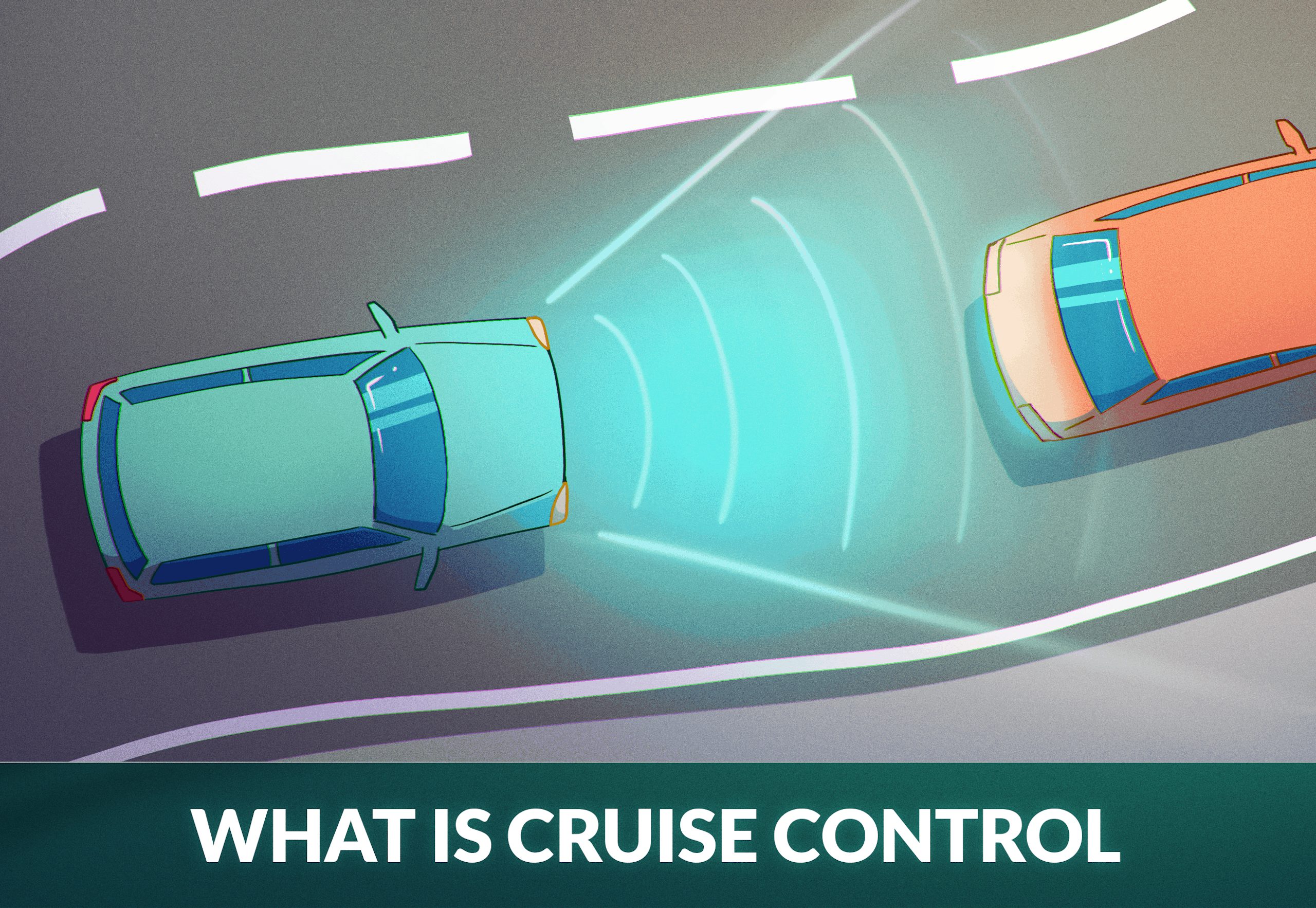
Cruise Control Explained – All You Need to Know
Cruise control has come a long way since first invented and patented by Ralph Teetor in 1950, who originally named it the “Speedostat”. Chrysler Corporation was the first manufacturer to offer the groundbreaking mechanism as an option on several of its luxury vehicle models nine years later. Today, cruise control is rapidly becoming the standard on all new vehicles, providing drivers with increased convenience on their daily drive.
As you’re learning how to operate a vehicle , understanding cruise control will help increase your comfort behind the wheel and knowledge of driving.
What is Cruise Control?
Cruise control is an electronic device within your vehicle that controls the speed of your vehicle. It allows the driver to maintain a constant speed of 25 mph without holding their foot on the accelerator. Although the feature has been around for 70 years, automotive manufacturers continue to improve upon the technology to provide drivers with increased comfort, luxury, and convenience whenever they’re behind the wheel.
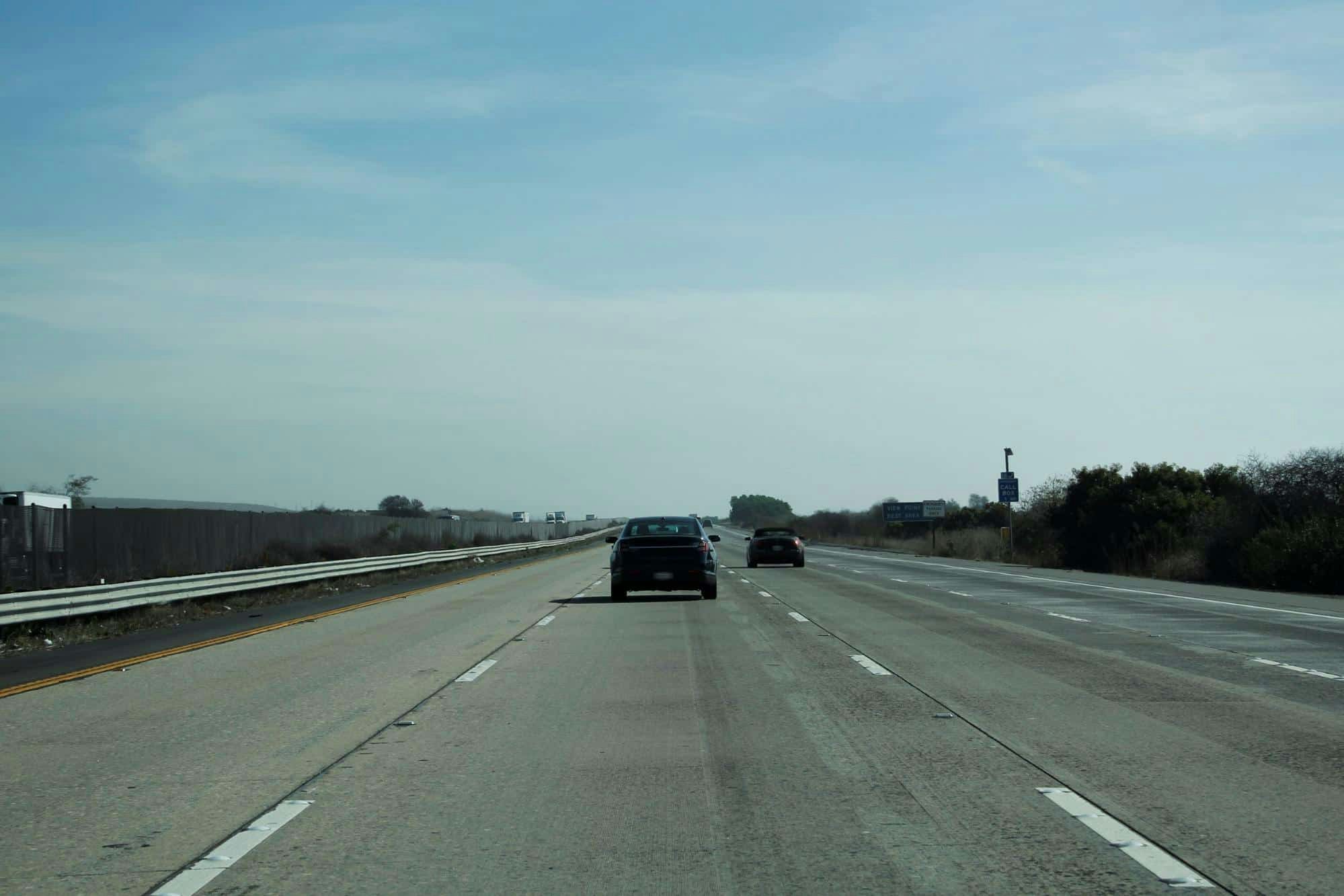
Different Types of Cruise Control
There are 3 types of cruise control systems.
- Speed Limiter
- Adaptive Cruise Control
- Semi-autonomous Cruise Control
What is a Speed Limiter?
A speed limiter will limit how fast the driver can accelerate behind the wheel. All modern vehicles contain a standard speed limiter capping speed between 120 mph and 180 mph depending to protect the vehicle’s engine and discourage reckless driving. However, an additional limiter can be added as an option in many European-made cars, as well as Tesla, Ford, and Nissan. Drivers are still required to keep their foot on the pedal to keep their vehicle in motion, but will not be able to accelerate past a predefined speed limit.
What is Adaptive Cruise Control?
Adaptive cruise c ontrol uses sensors around the vehicle’s exterior to maintain speed while keeping a safe following distance from the car ahead. The system will slow you down and speed you up as the flow of traffic fluctuates throughout your commute, removing a lot of the stress from daily driving. However, adaptive cruise control may not work well in bad weather or protect you from sudden movements, so you will want to always keep your full attention on the road.
What is Semi-autonomous Cruise Control?
Luxury automakers such as Tesla and Audi are implementing the newest rendition of cruise control on their latest vehicle models – Semi-autonomous Cruise Control. It works largely the same as adaptive cruise control, but assists drivers with lane guidance and steering. There are several variations of semi-autonomous cruise control that include additional convenience features for the driver.
How to Use Cruise Control – 6 Step Guide
These are the steps to using cruise control effectively.
- Observe weather conditions
- Build speed
- Engage cruise control
- Set cruise control
- Watch the road and steer
- Brake to disengage
1 – Observe weather conditions
As mentioned, cruise control may become inconsistent in rainy, snowy, or otherwise hazardous conditions. If you must drive in this situation, it may be a better idea to do so manually. Cruise control works best on a clear day with constant traffic flow.

2 – Build speed
Accelerate to your desired speed as you prepare to activate cruise control. US highways have posted speed limits between 55 mph and 75 mph. Do not attempt to set cruise control when you are traveling over the speed limit.
3 – Engage cruise control
Once you’ve reached your desired speed, engage the cruise control. This step will vary widely based on your vehicle make and model, however, many cruise control settings are accessible from the steering wheel controls. Check your owner’s manual for further information.
4 – Set cruise control
After turning on cruise control, you’ll need to set your desired speed. Many systems set the cruise control at the current speed, while others require you to manually set one. You can increase and decrease this speed as needed without interrupting the mechanism.
5 – Watch the road and steer
Watching the road is essential when cruise control is engaged. Cruise control is not a substitute for a human driver and will require supervision at every step. If you are using a semi-autonomous system, you will not need to steer but will need to keep at least one hand on the wheel for safety measures.
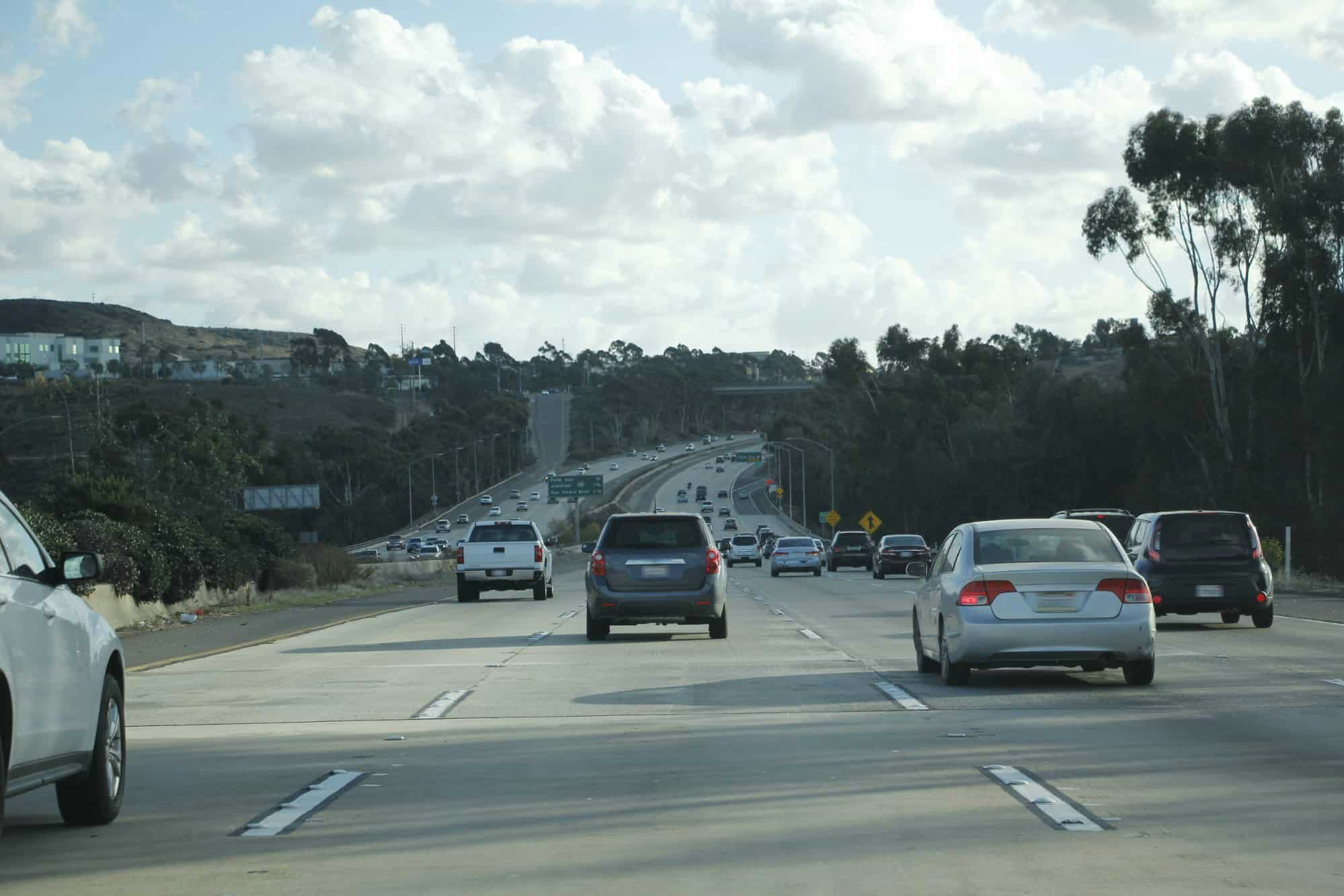
6 – Brake to disengage
When cruise control is no longer needed, or you need to quickly make a maneuver, simply apply pressure to the brakes to disengage the system. Once deactivated, you will be in full control of your vehicle once again.
When NOT to Use Cruise Control
While cruise control is a convenient feature for modern drivers, it is not perfect for all circumstances. In fact, utilizing the system can be quite dangerous if you’re not careful. Be sure not to use cruise control under these conditions.
Heavy Traffic
Heavy, or stop-and-go traffic is not ideal for safely using cruise control. When engaging cruise control on the highway, ensure your lane is clear and there are no vehicles stopping ahead.
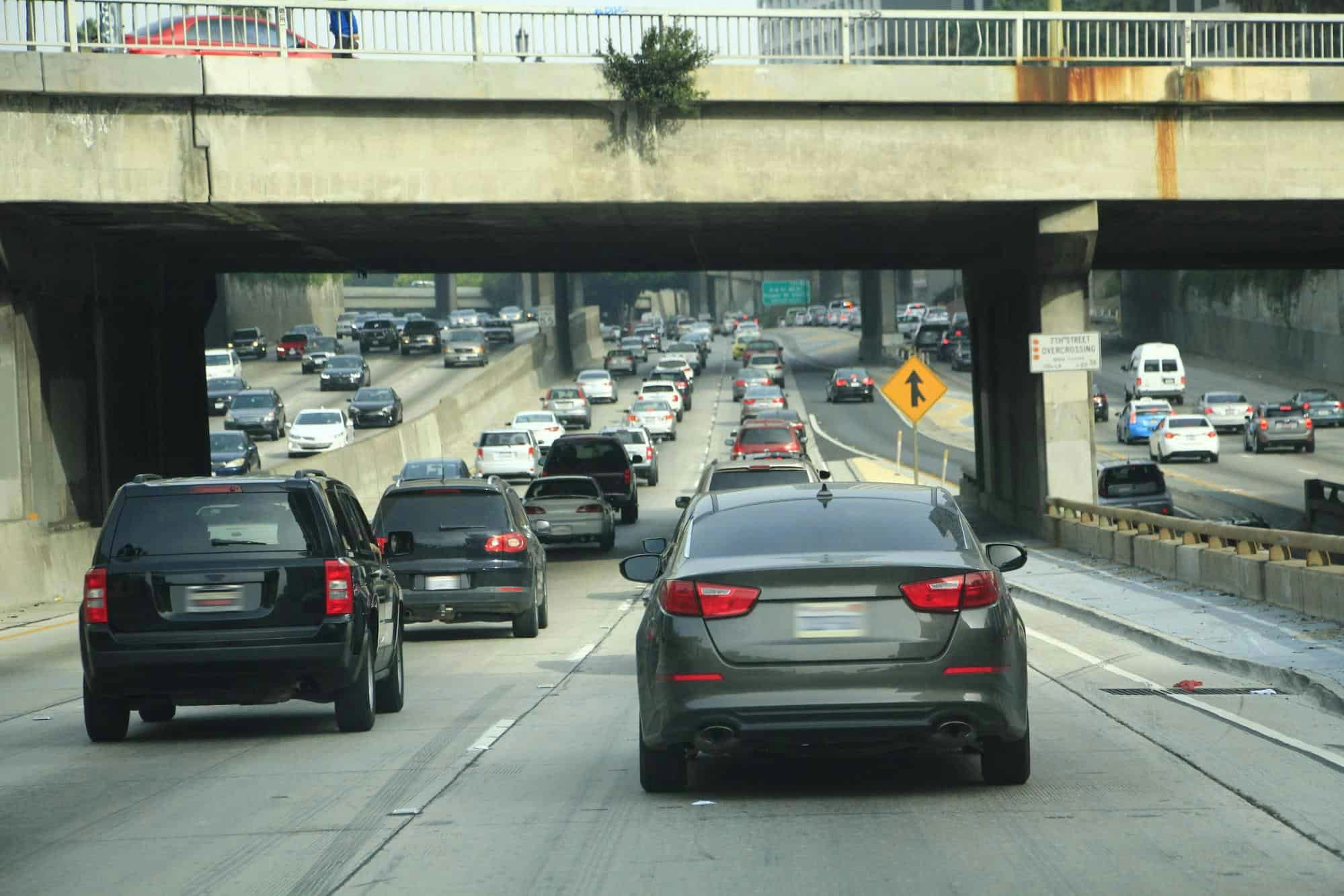
Wet or Icy Conditions
You need to be driving slowly while on wet and icy roads. While cruise control keeps a constant, predetermined speed, it takes away a lot of the manual control needed to stay safe when it’s raining or snowing.
City Driving
While driving through the city, you’ll face a number of stop lights and stop signs that will require manual braking. This action will automatically disengage cruise control.
Winding Roads
Winding roads require more attention than straight, flat streets. Cruise control systems, even adaptable cruise control, may not always detect these streets correctly, causing accidents.
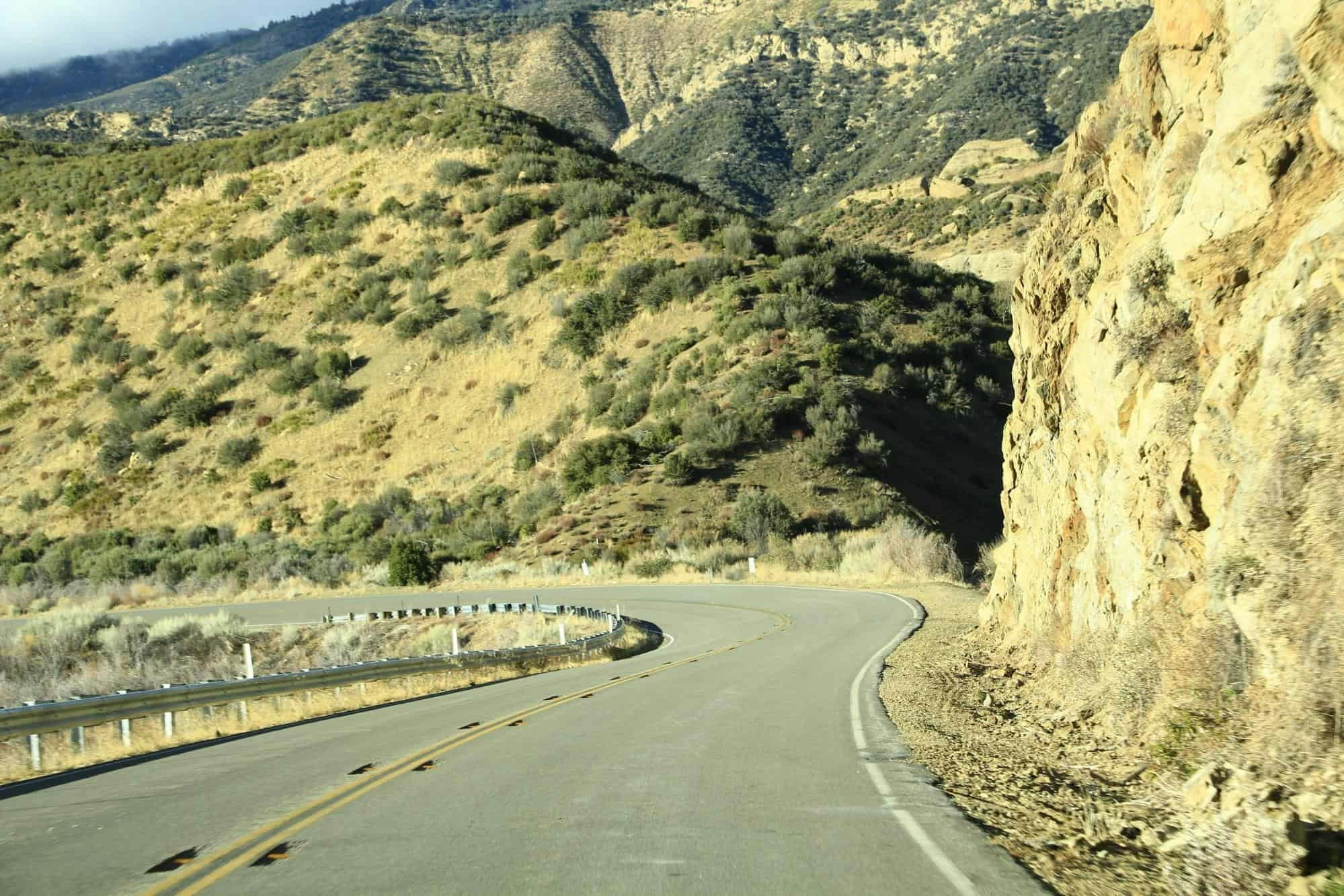
Fatigued Driving
Driving while fatigued is never a good idea, but even less so while using cruise control. Utilizing the system may add to your fatigue, as you give your vehicle more control of the journey. If you’re even the least bit tired, you should never turn on cruise control.
As you can see, cruise control is a great way to relieve much of the stress that comes with everyday driving. The constant rate of speed can also drastically improve fuel efficiency for longer drivers. Cruise control has had a positive impact on the driving industry for 70 years and shows no signs of disappearing anytime soon.

550+ exam-like questions
All you need to ace your test
Perfect for first-timers, renewals and senior citizens
Recommended articles

Zutobi 2024 Holiday Report: The Deadliest Holidays to be Driving
Holidays are meant to be moments of joy and celebration, but amidst the festivities, there are hidden dangers that we often overlook. every year, as countless americans hit the road to enjoy their well-deserved breaks, they unwittingly encounter risks that can turn these happy occasions into tragic events. between 2018 and 2022, an alarming 11,058 […].
Driving School Costs Report – The Cheapest and Most Expensive States
For many, the ability to drive is not just about mobility—it’s a rite of passage that symbolizes freedom and the thrill of charting one’s own course. the anticipation of sitting behind the wheel for the first time is a universal dream, yet for many aspiring drivers in the united states, this dream comes with variable […].
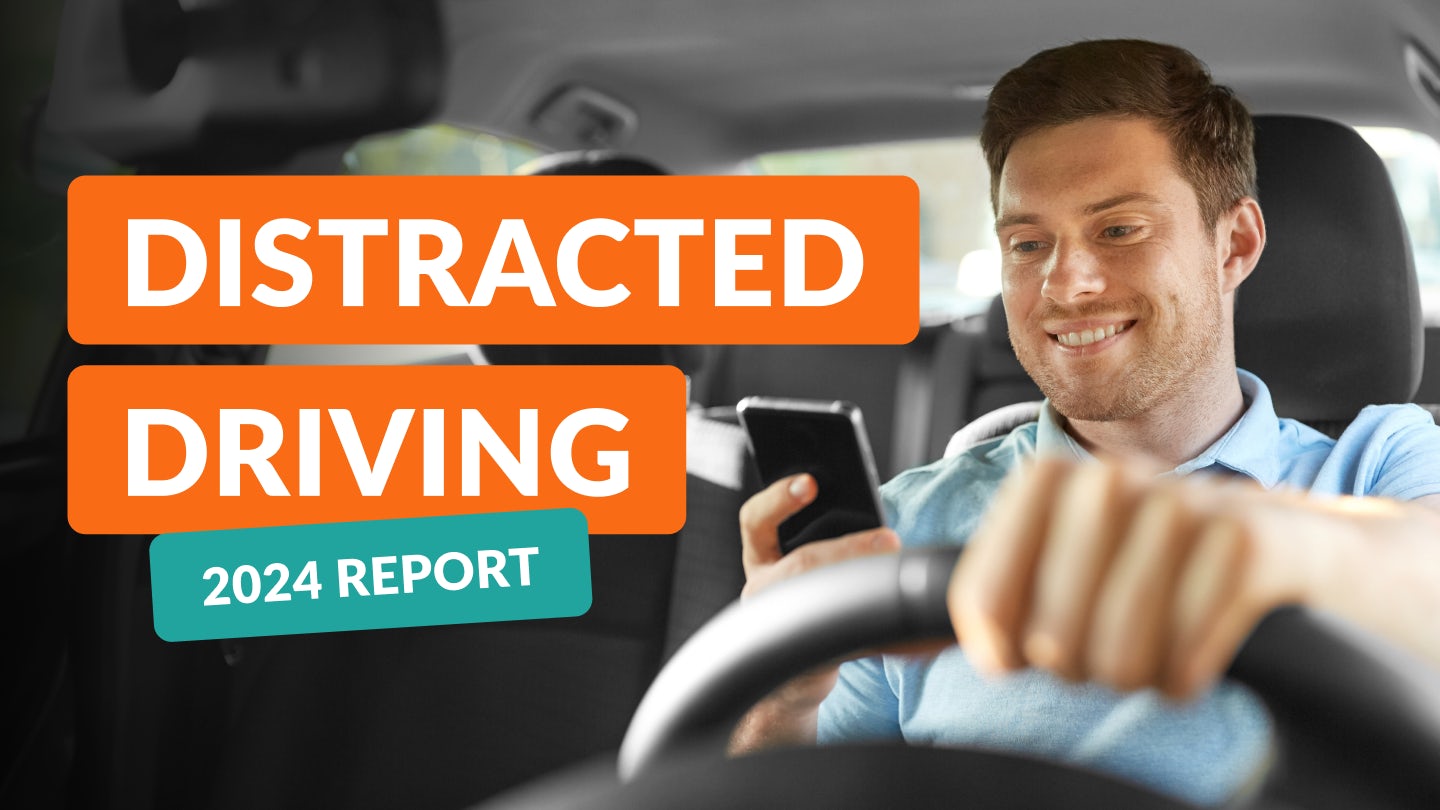
Distracted Driving Report – The States With the Least and Most Distracted Driving
In april 2024, the national highway traffic safety administration (nhtsa) released data for 2022 that illustrated traffic deaths due to distracted driving increased by 12 percent from 2020 but decreased compared to 2021 to 6%. every year, thousands of drivers and passengers are fatally injured as a result of distracted driving. in 2022, roughly 2,109 […].
Ace your DMV test, guaranteed
Get started
Best of the Zutobi blog
- Learner’s Permit Ultimate Guide
- Driving Test Ultimate Guide
- Traffic Lights Guide
- How to Pass the DMV Permit Test
- How to Pass the Driving Test
- Common Reasons For Failing the Road Test
- International Driver’s Permit Guide
- Driver’s License Renewal
- How to Get Your US Driver’s License
- How to Prepare for Your Road Test
- How to Get a Driver’s Permit
- Behind-The-Wheel training
- Terms & conditions
- Privacy policy
- Do Not Sell My Personal Information
- Subscription terms
- Terms & policies
Practice Tests
- Car Practice Tests
- CDL Practice Tests
- Motorcycle Practice Tests
- Free Practice Tests
Get Started
- Driver's license explained
Start Driving
- Knowledge test prep
- How many questions?
- Driving basics
- Traffic signs
Drive Better
- Safety tips
- Advanced maneuvers
- Tech & navigation
- Cruise control
- Eco-friendly driving
- License renewal
- Routine maintenance
- DIY repairs
On The Road
- International driver's license
- Hydroplaning explained
How to Use Cruise Control: Specific Things You Need to Know Well
Discover expert insights and practical tips on using cruise control effectively. This comprehensive guide covers everything from basic operations to advanced features, safety tips, and troubleshooting.

Written by Andrei Zakhareuski. With over 16 years of expertise, Andrei leads Driving-Tests.org, a top online resource for driver education. His leadership has established vital partnerships with over 2,600 libraries, educational bodies, and state agencies.
Cruise control is a valuable feature in many modern vehicles, enhancing convenience and efficiency, especially during long drives. This guide delves into the intricacies of using cruise control, offering expert insights, technical details, safety tips, and more.

Understanding Cruise Control
what is cruise control.
Cruise control is an electronic system that allows a vehicle to maintain a steady speed set by the driver . Cruise control is designed to be used on roadways without frequent stops. It’s ideal for use on highways and long stretches of road with minimal stops or turns.
Types of Cruise Control
- Standard cruise control maintains a set speed until manually overridden.
- Advanced systems, like adaptive cruise control , automatically adjust speed based on traffic conditions.
Operating Cruise Control
- Adjusting Speed
Before activating cruise control, ensure conditions are safe. It’s not advisable to use cruise control in hazardous weather or heavy traffic.

Safety Tips
Remain vigilant and ready to deactivate cruise control instantly in case of an emergency or changing traffic conditions.
Speed Limits
Always adhere to speed limits. Cruise control should not be used to maintain speeds above legal limits.
Advanced Features
Adaptive Cruise Control
This modern feature uses sensors and radar to maintain a safe distance from the vehicle ahead, adjusting speed automatically.
Troubleshooting Common Issues
System Not Activating
If your cruise control doesn’t activate, start with the basics. Ensure it’s turned on and you’re at the right speed (usually above 25-30 mph). If these aren’t the issues, it might be a blown fuse, a faulty brake pedal switch, or a defective speed sensor. Check your vehicle’s manual for fuse information and consider a professional inspection of the brake pedal switch and speed sensor.
Failing to Maintain Set Speed
Trouble maintaining the set speed often points to sensor issues. Speed sensors inform the cruise control system. If these sensors are dirty or malfunctioning, the system might not maintain the speed. Cleaning sensors and checking for obstructions can help. Also, consider checking wheel alignment and tire condition, as these can affect performance.
Erratic Speed Changes
If your vehicle experiences erratic speed changes with cruise control engaged, this could indicate a problem with the throttle control system or the vehicle’s computer system. These complex issues generally require professional diagnostics and repair.
Adaptive Cruise Control Problems
With adaptive cruise control, problems can arise from blocked sensors or system malfunctions. Ensure that the sensors, often located in the front grille or under the mirrors, are clean and unobstructed. For system malfunctions, professional diagnostics are essential, as these systems involve advanced electronics and software.
Comparative Analysis of Modern Cruise Control Systems
In the realm of modern vehicles, cruise control systems have evolved significantly, offering a range of functionalities tailored to enhance driving experience and safety. Here’s a comparative analysis of several popular systems.
Tesla Full Self-Driving (FSD) Beta
Tesla’s FSD Beta represents a leap forward in autonomous driving technology. It’s not just a cruise control system but an advanced driver-assistance system capable of navigating complex driving scenarios. Key features include automatic lane changes, stop sign and traffic light recognition, and the ability to navigate city streets. While it offers substantial automation, it still requires driver supervision and isn’t fully autonomous.
GM's Super Cruise
General Motors’ Super Cruise system is available in select Cadillac models and provides hands-free driving assistance on compatible highways. It uses LiDAR map data, high-precision GPS, and a driver attention system to ensure safety. Unlike Tesla’s FSD, it’s limited to highway use but excels in hands-free driving comfort and safety.
Ford Co-Pilot360
Ford’s Co-Pilot360 includes adaptive cruise control with stop-and-go and lane-centering. It’s less about hands-free driving and more about reducing driver fatigue and enhancing safety. This system is excellent for everyday driving, offering features like speed sign recognition and evasive steering assist.
Mercedes-Benz DRIVE PILOT
Mercedes-Benz DRIVE PILOT system pushes towards Level 3 autonomy, allowing drivers to hand over control under certain conditions, like heavy traffic or on highways. It uses a sophisticated array of sensors and cameras, offering a smooth and intuitive driving experience. It’s more advanced than traditional systems but still requires driver attention.
BMW's Driving Assistant Professional
BMW offers the Driving Assistant Professional system, which includes features like adaptive cruise control with stop-and-go, lane-keeping assistant, and traffic jam assistant. It’s designed for convenience and safety, providing a balanced mix of automation and driver control.
Each system has its strengths and caters to different driving needs and preferences. Tesla’s FSD Beta is at the forefront of autonomy but requires active supervision. GM’s Super Cruise excels in hands-free highway driving, while Ford’s Co-Pilot360 focuses on safety and driver assistance for everyday use. Mercedes-Benz and BMW offer systems that blend convenience, safety, and a step towards higher autonomy, maintaining a balance between automated and manual driving.
This comparison highlights the diversity in cruise control technologies, illustrating how each brand tailors its system to specific driving experiences and safety standards.
Real-World Impact
Cruise control technology not only adds convenience to driving but also significantly impacts safety and efficiency. This section delves into the real-world implications of using cruise control, supported by safety statistics and research findings.
The integration of cruise control in vehicles has been a game-changer in terms of driving safety and efficiency. Here are some key impacts:
Reduced Driver Fatigue : Continuous concentration over long drives can lead to driver fatigue, a leading cause of road accidents. Cruise control allows drivers to maintain a constant speed without constant pedal adjustment, reducing the physical and mental strain during long journeys.
Improved Fuel Efficiency : By maintaining a steady speed, cruise control helps in reducing fuel consumption. Studies have shown that erratic speed variations can lead to higher fuel consumption, whereas maintaining a consistent speed optimizes fuel efficiency.
Safety Statistics : Research indicates that the use of cruise control can lead to a reduction in speed-related accidents. However, it’s crucial to note that over-reliance on cruise control in inappropriate conditions (like city driving or in heavy traffic) can negate these safety benefits.
Impact on Traffic Flow : When used widely, cruise control can contribute to smoother traffic flow on highways. Consistent speeds help in reducing the frequency of braking and acceleration among vehicles, leading to less congestion and smoother traffic movement.
It’s important to balance the use of cruise control with active driving engagement, ensuring that safety is always the top priority.
For a deeper understanding of cruise control and its various aspects, it’s always beneficial to refer to your vehicle’s manual and seek guidance from automotive professionals.
Was this page helpful?
- Understanding Cruise Control
- What is Cruise Control?
- Types of Cruise Control
- Operating Cruise Control
- Safety Tips
- Advanced Features
- Troubleshooting Common Issues
- Comparative Analysis of Modern Cruise Control Systems
- Real-World Impact
Car Insurance
Home & renters insurance, car repair estimates, read car content, jerry data & research, can you add cruise control to a car.
I recently inherited an older car from my grandfather. I’m fixing it up myself, and I noticed it doesn’t have cruise control. Can you add cruise control to a car that doesn’t have it?

Join 4M+ members in lowering their car insurance
You might also be interested.
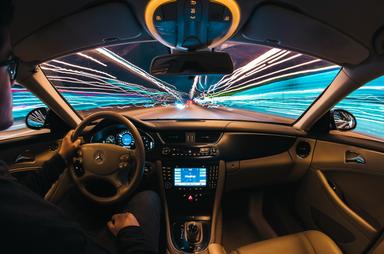
What Does the Cruise Button Do in a Car?

Why is My Cruise Control Not Working?

Does GMC Have a Self-Driving Car?

Read Advice From Car Experts At Jerry
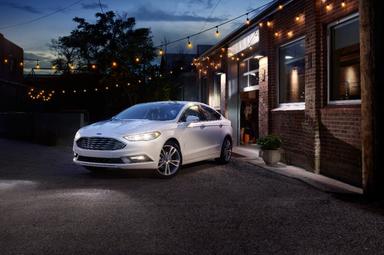
2010 Ford Fusion Battery Size

Is American Family Roadside Assistance Worth It?

How to Get a South Dakota Driver’s License Reinstatement

What Others Are Asking
Does the 2019 hyundai tucson have a spare tire.

How much does it cost to convert a classic car to electric?

How much are Formula 1 electric cars?

Browse More Content
Car repair resources.
- Anti-Lock Fuses Or Relay Replacement Cost
- Brake Rotor Disc Replacement Cost
- Lateral Link Replacement Cost
- Wheel Bearings Replacement Cost
- Wheel Stud Replacement Cost
Insurance for Your Car
- Acura Rdx Insurance Cost
- Acura Rl Insurance Cost
- Gmc Envoy Insurance Cost
- Lexus Ls Insurance Cost
- Volkswagen Jetta Insurance Cost
Insurance in Your State
Insurance in your city.
- Glenolden PA Insurance
- Madison WI Insurance
- Copperas Cove TX Insurance
- Monterey CA Insurance
- Andalusia AL Insurance
Easiest way to compare and buy car insurance
Car insurance by make, car insurance by model, car insurance by state, car insurance by city, car loan by make, car insurance by company, car loan by state, car repair by service.

IMAGES
VIDEO
COMMENTS
Step 5 - Install a Cruise Control Computer. If your car needs a new system or is not cruise control ready, then you will also need to install the cruise control computer. Normally this is near the driver's side kick panel, though the location can vary depending on the vehicle. Most cars will have studs where the computer smoothly fits over.
The answer is no, not all cars come with cruise control. In fact, many older vehicles don't have it. Even some newer vehicles don't have cruise control, although this is becoming increasingly rare. With how much of a convenience this feature is, manufacturers are including it as a standard option. If you're not sure whether or not your ...
Here's a quick look at the steps to install an aftermarket cruise control in a car: Program the actuator and install it in a safe location in the vehicle. Measure the throttle travel and mark the distance from the starting and finishing points. Set the pulley segment to its open throttle position. Slide the barrel cable through the appropriate ...
Wiring harness: Most kits come with a wiring harness, complete with colored wires. Instructions will guide you to wire the hot and cold sides of your brake switch. Other wires connect to the ignition "run" contact and ground. A significant step is to splice into a Vehicle Speed Signal (VSS) wire. Most cars of the past 20 years have a VSS.
If your car or truck is the new drive-by-wire throttle system, the cruise control kit you order will already take that into account. Most of the older types of throttle systems are based on a throttle cable. You push on the gas pedal, and a cable pulls open the throttle body. This is still the majority of throttle systems available today.
Simple to use, all you need to do is turn on the system in your vehicle, reach your desired cruising speed, and set it. The system then assumes control of the accelerator, maintaining the set ...
Rostra is a leading manufacturer of automotive comfort, safety, and convenience accessories including electronic cruise control systems, vehicle speed limiters, backup camera relocation kits, LED lighting, exterior vehicle camera systems, automotive lumbar supports and seat heaters, driver alert systems, and more. 2351 J. Lawson Blvd.
Fuel Efficiency. One of the main advantages of using cruise control is improved fuel efficiency. By maintaining a constant speed, cruise control helps reduce fuel consumption, leading to better gas mileage. Rapid acceleration and deceleration, on the other hand, can lead to increased fuel consumption.
Can you add cruise control to a car? Yes. Depending on the year, make and model, cruise control may be available for add-on or retrofit. Professional installation is recommended, and you'll want ...
Updated May 9, 2022. Adaptive cruise control (ACC) is like traditional cruise control, but smarter. ACC systems allow you to set a desired speed until your vehicle encounters slower-moving traffic ...
You operate cruise control by either a stalk on the steering column or several buttons on the steering wheel. These include an on-off switch; a "set" button to select the speed you want the car to ...
Cruise control can be advantageous for drivers in other ways too. In its capacity to ensure a vehicle remains at a steady speed, where possible, it can boost driving efficiency. According to ...
Adaptive cruise control (ACC) is a system designed to help vehicles maintain a safe following distance and stay within the speed limit. This system adjusts a car's speed automatically so drivers ...
Locate the cruise control button on your vehicle; most cars have it on the steering wheel. Once you are at the desired speed, hold your foot on the gas pedal. Set the cruise control by pushing the cruise on/off button, then take your foot off of the gas. If you maintain the same speed, your cruise control has been activated.
More complex adaptive cruise control (ACC) systems alter the speed the car is travelling at to keep it a set distance from the vehicle in front, and some systems can keep control of the driving in ...
Cruise control is a feature allowing the driver to set a predetermined speed, which the system's computer maintains until the driver adjusts the speed, taps the brake, or disengages the system ...
3. Drive your car until you reach your desired speed and hit "SET.". Cruise control will set the car to hold steady at a particular speed. Once you reach the speed you want (keep an eye on your car's speedometer), push the "SET" button.
You can add adaptive cruise control to your car, but it will require more work if your vehicle wasn't designed to support it. ... Fortunately, it is possible to add adaptive cruise control (ACC) to vehicles that are not already equipped with it. There are 2 main factors to keep in mind when adding ACC to your car: Your car type The cost of ...
For your car, check the manufacturer's manual for the location and specific instructions. To set cruise control, press the ON/OFF button or switch. If you press this button again, it typically turns the system off. The Res + (resume / increase seed) button increases the cruising speed by 1 mph, while the Set - (set speed / reduce speed ...
5 - Watch the road and steer. Watching the road is essential when cruise control is engaged. Cruise control is not a substitute for a human driver and will require supervision at every step. If you are using a semi-autonomous system, you will not need to steer but will need to keep at least one hand on the wheel for safety measures.
Set the cruise control: Once you've switched the system on, press the set button. This will communicate with your car to hold the current speed. In most vehicles, this will turn the dashboard indicator green. After the cruise control is set, you can remove your foot from the accelerator and the car should maintain its speed. 4.
Cruise control allows drivers to maintain a constant speed without constant pedal adjustment, reducing the physical and mental strain during long journeys. Improved Fuel Efficiency: By maintaining a steady speed, cruise control helps in reducing fuel consumption. Studies have shown that erratic speed variations can lead to higher fuel ...
Aftermarket cruise control kits are easy to install, and add more benefits to your car. Installing an aftermarket cruise control kit in your car can provide more comfortable driving, a lesser chance of fatigue, a decreased risk of speeding, and increased gas mileage. Whether the car you inherited is your first car or you're adding to your ...
Of course, Mr Haab concedes there are a few caveats to this. The main one is all drivers would need to use such automation on highways. And, given the average age of a car in Australia is 10.6 ...